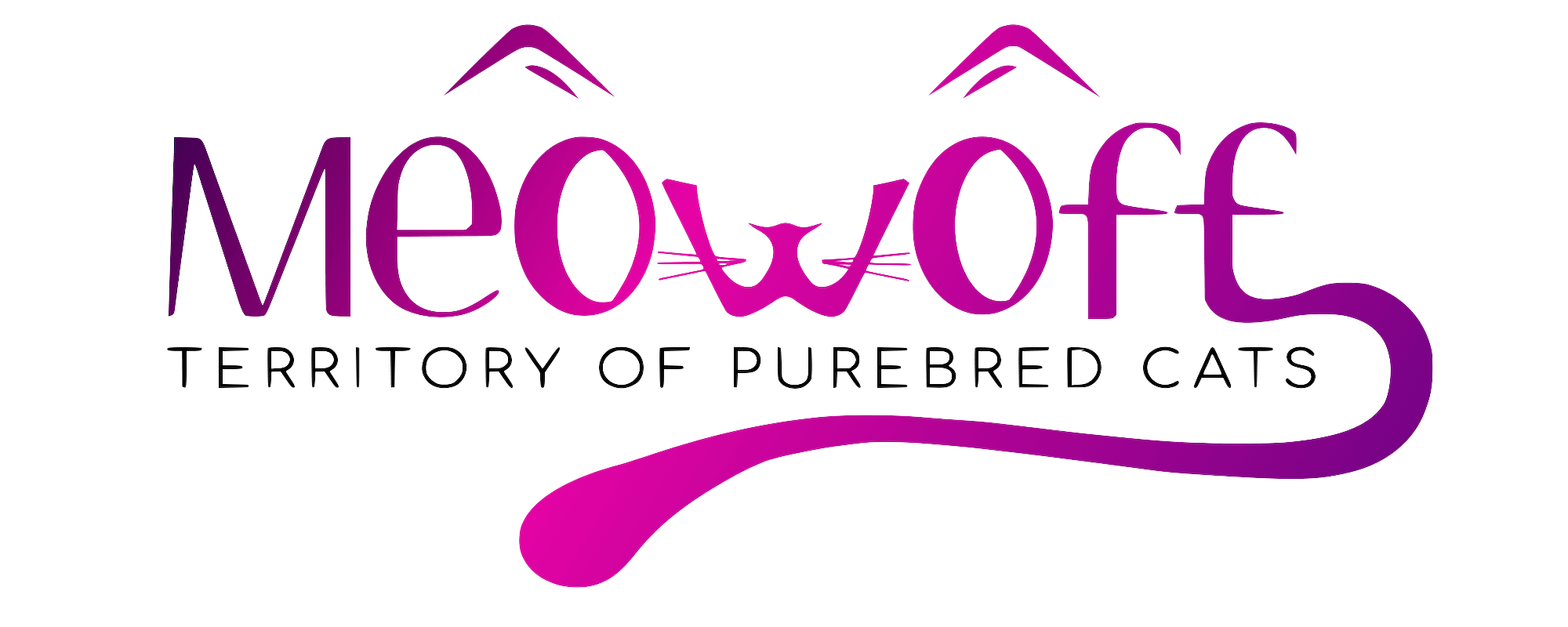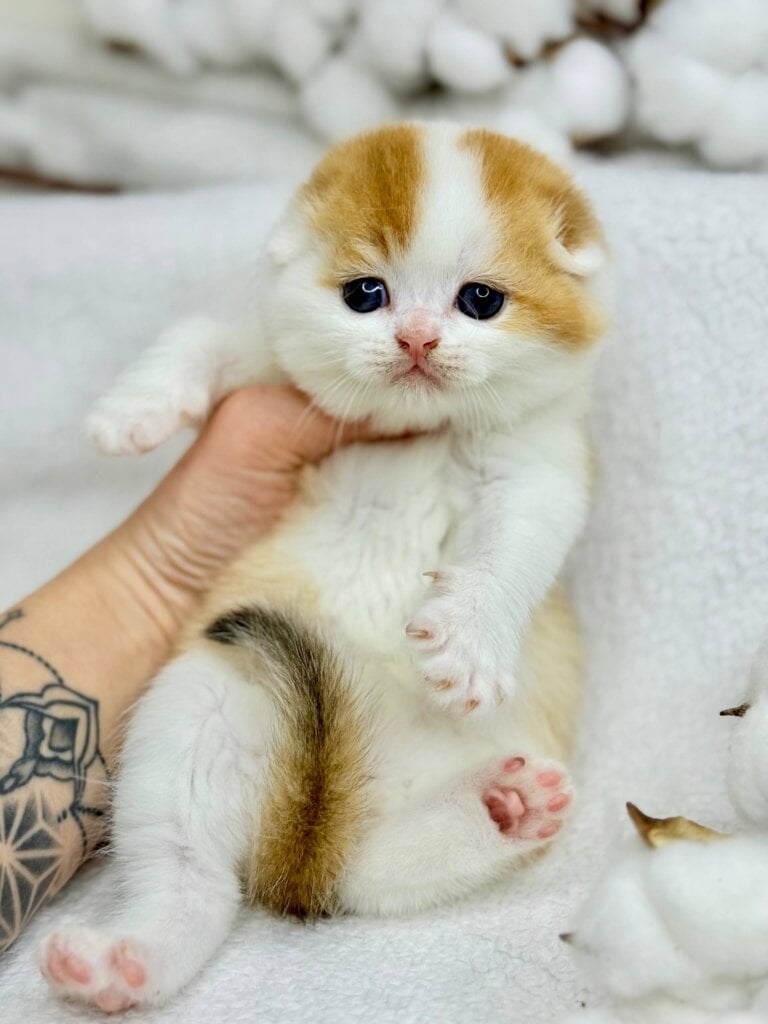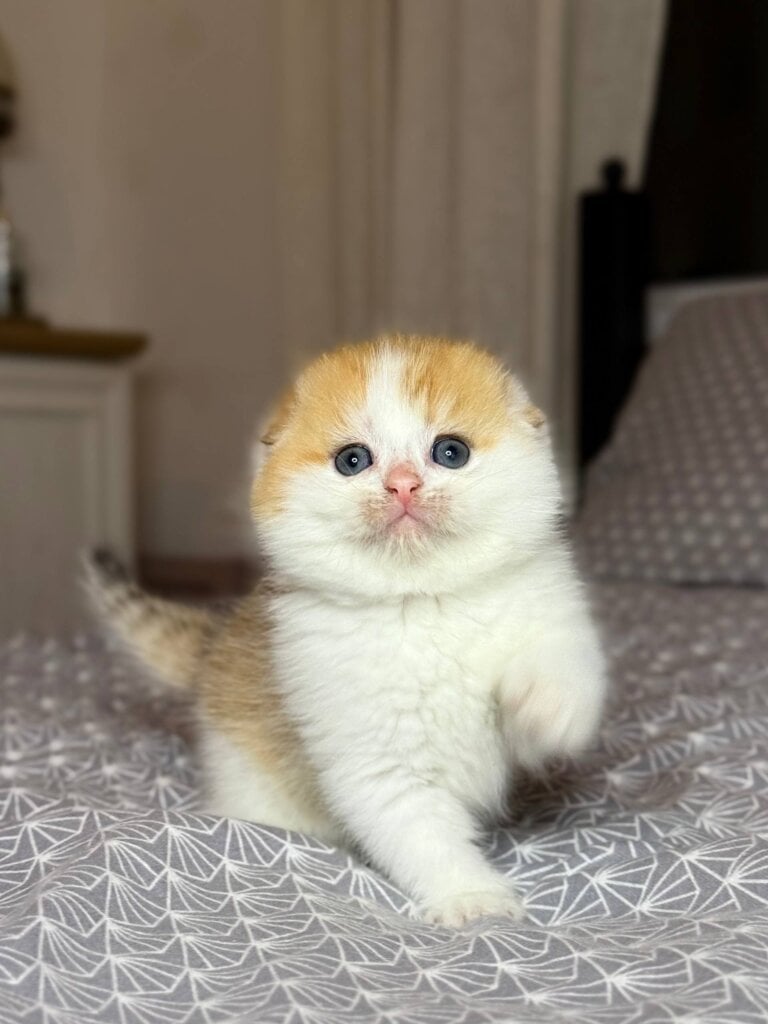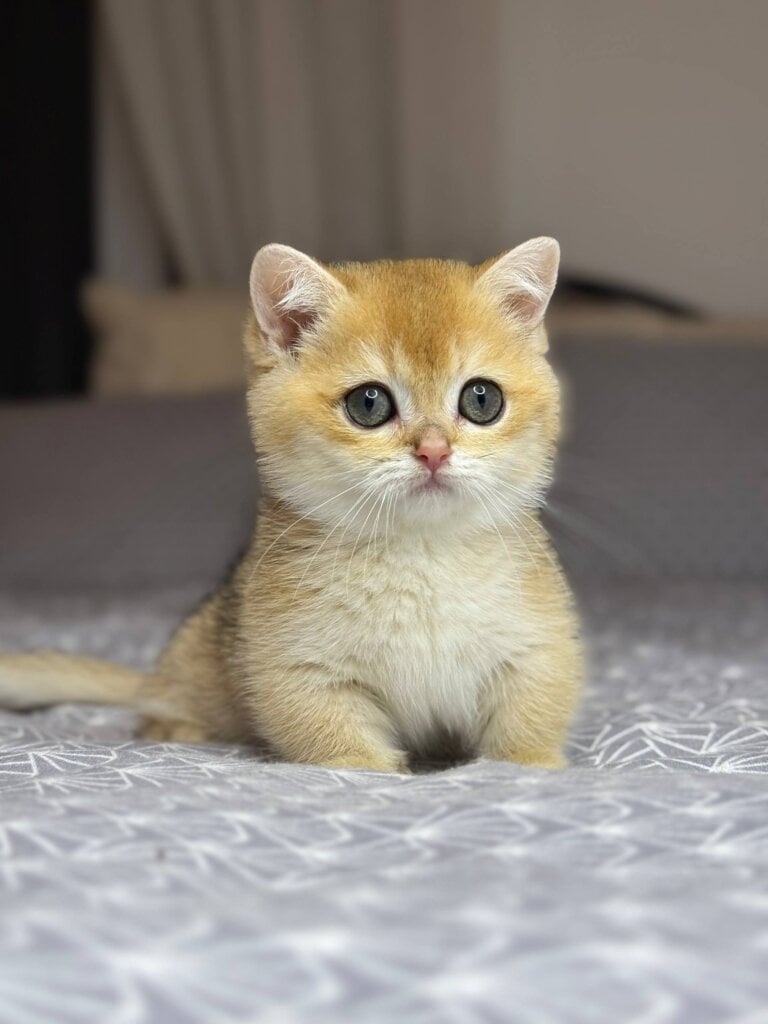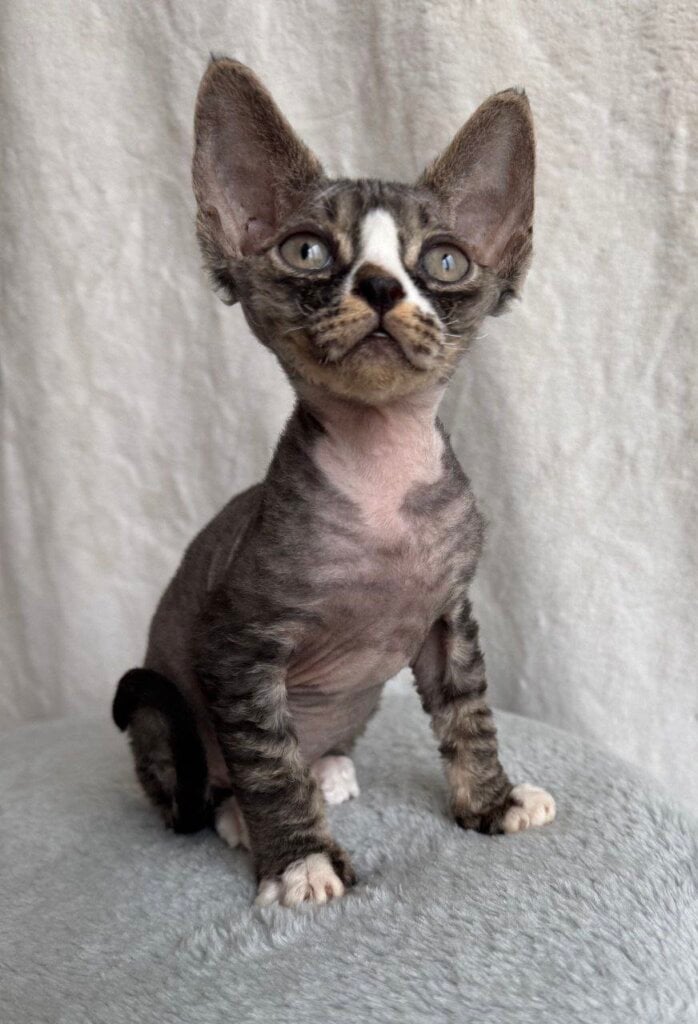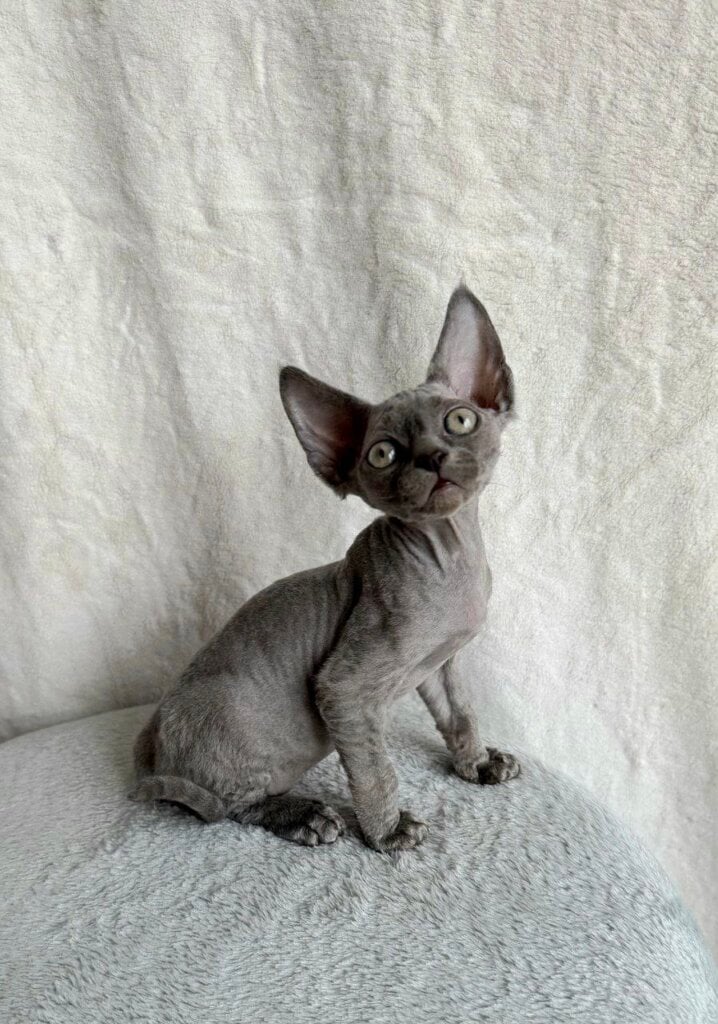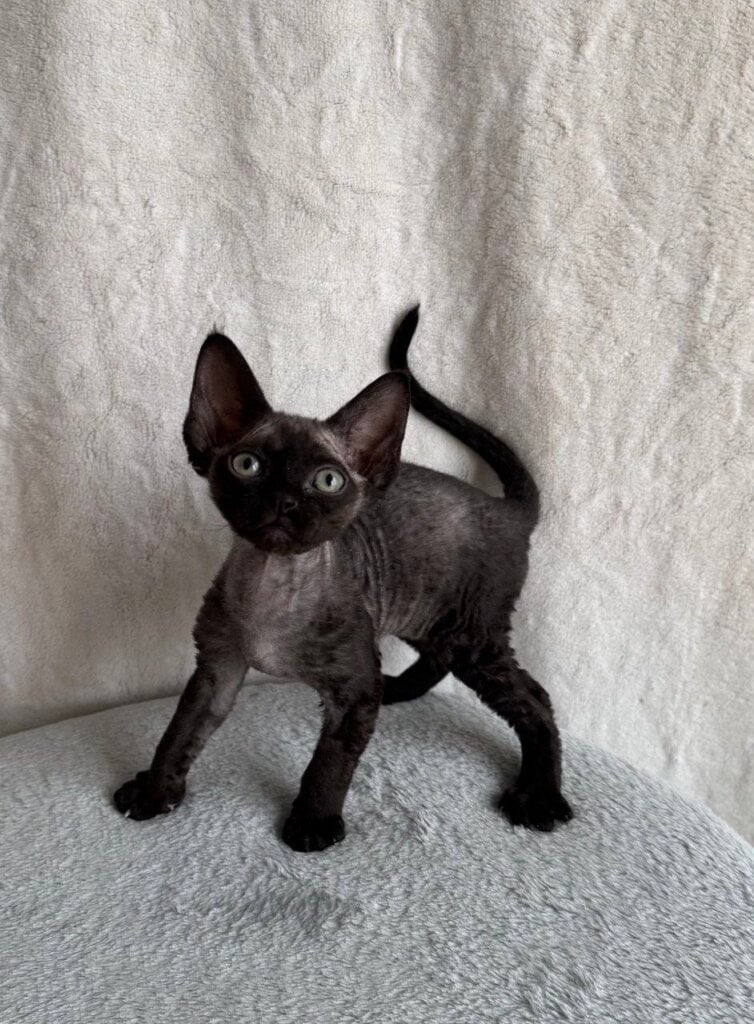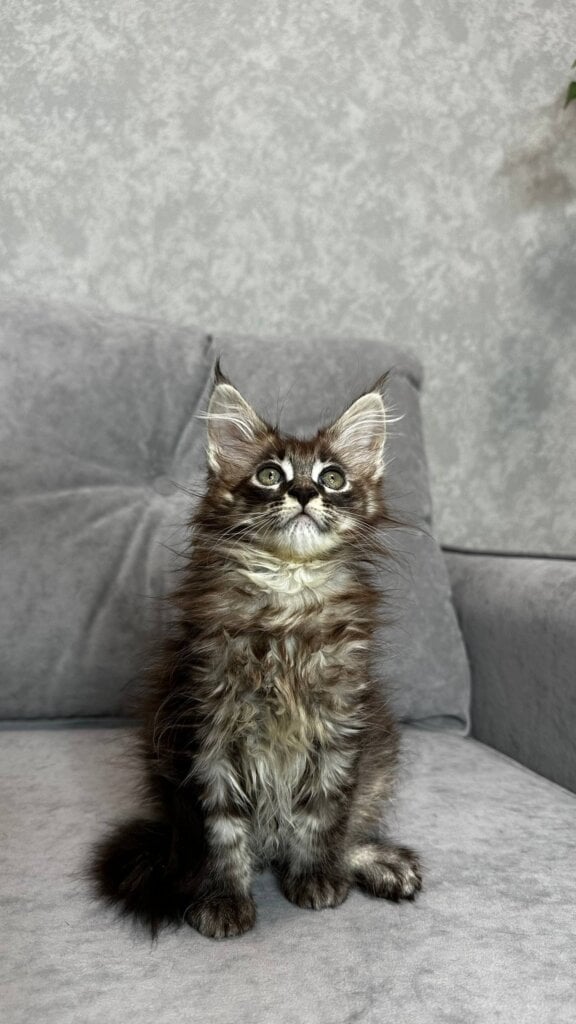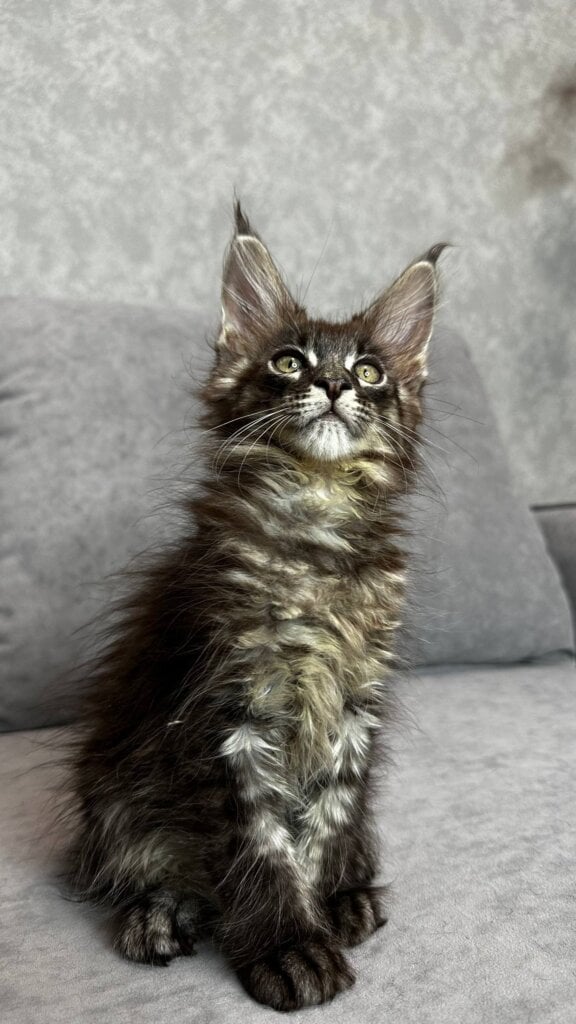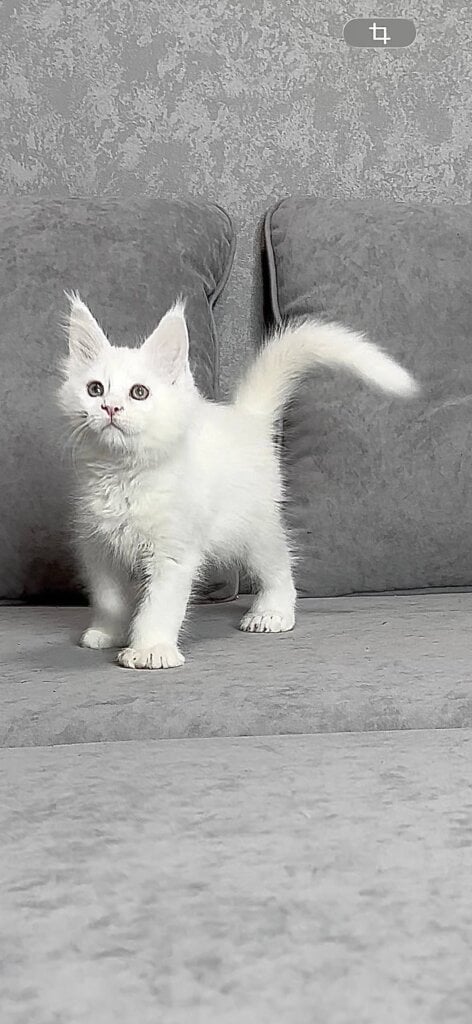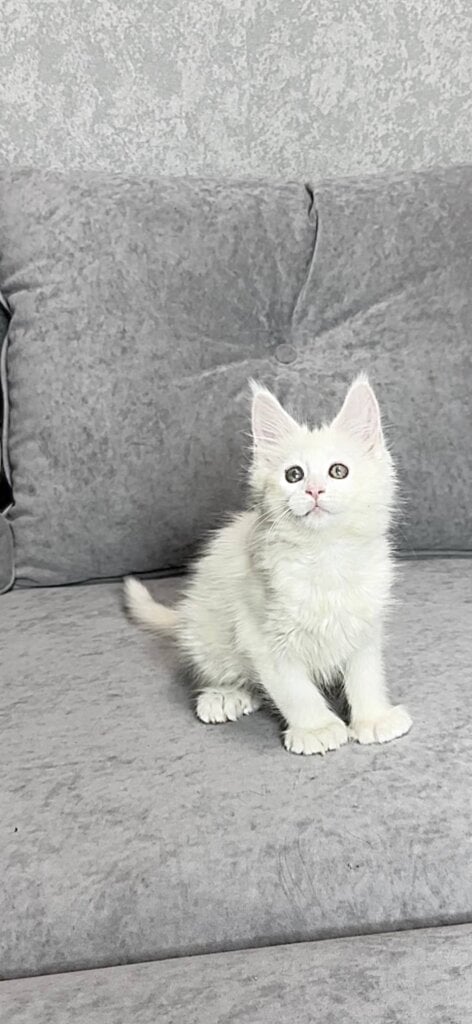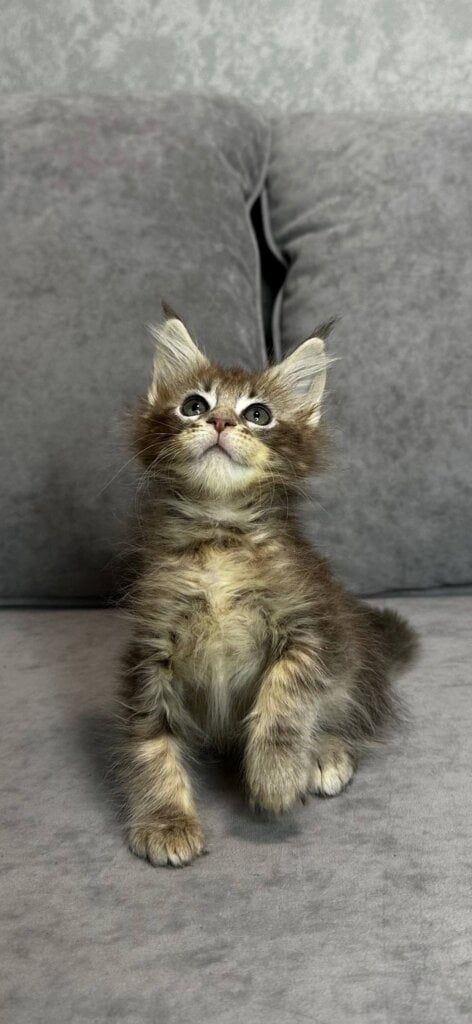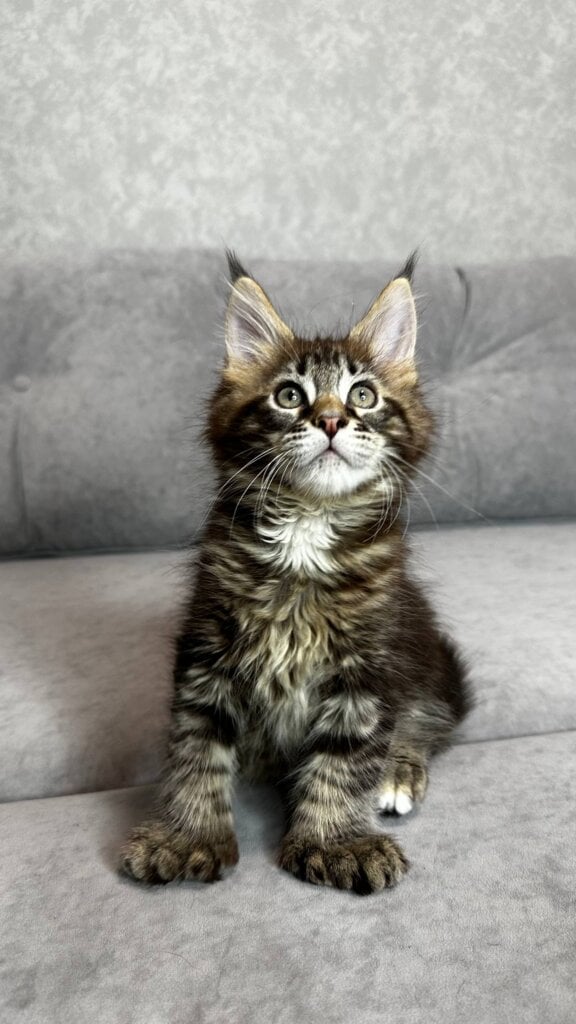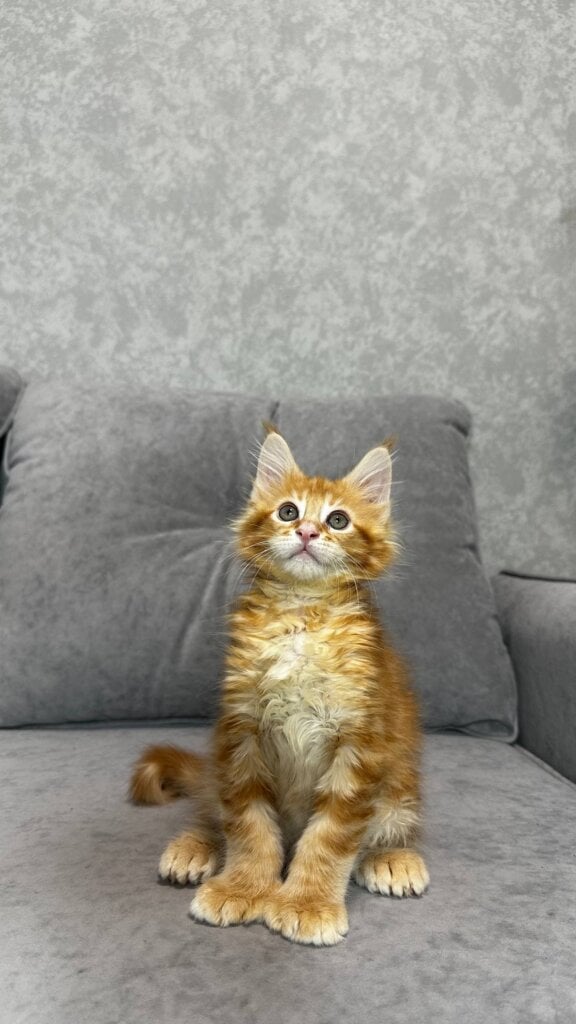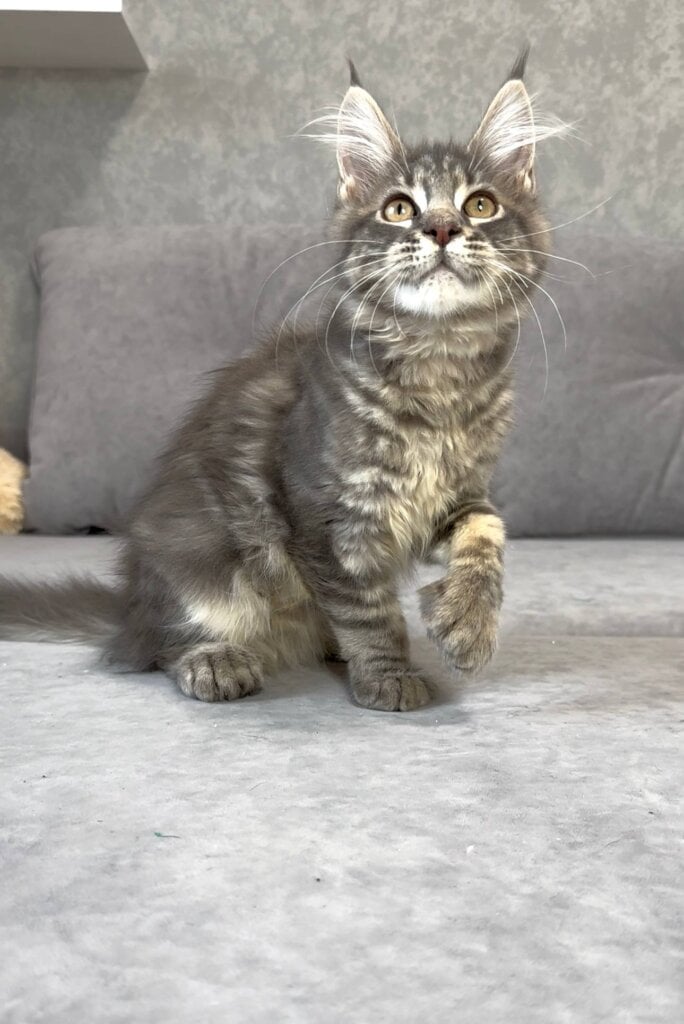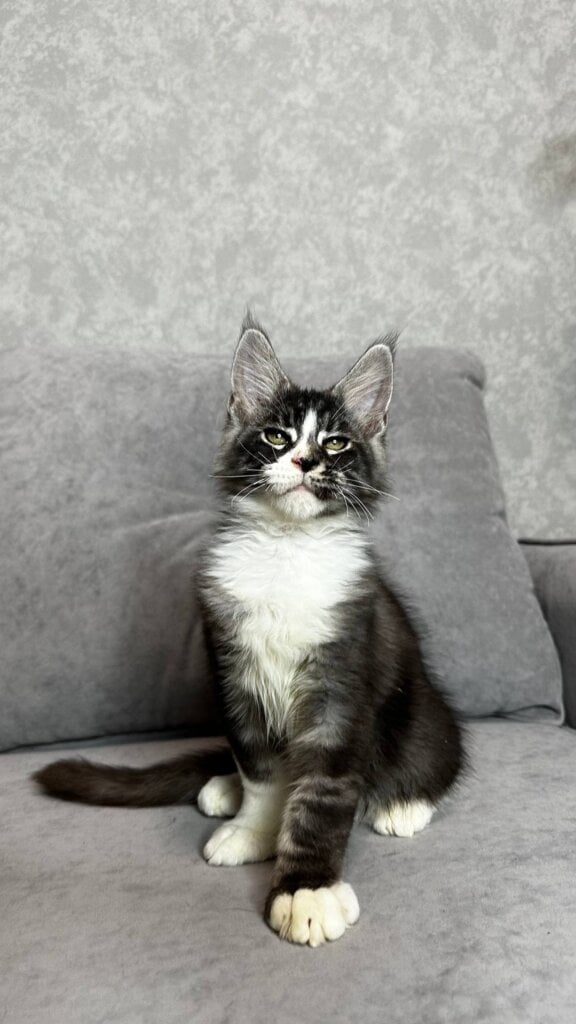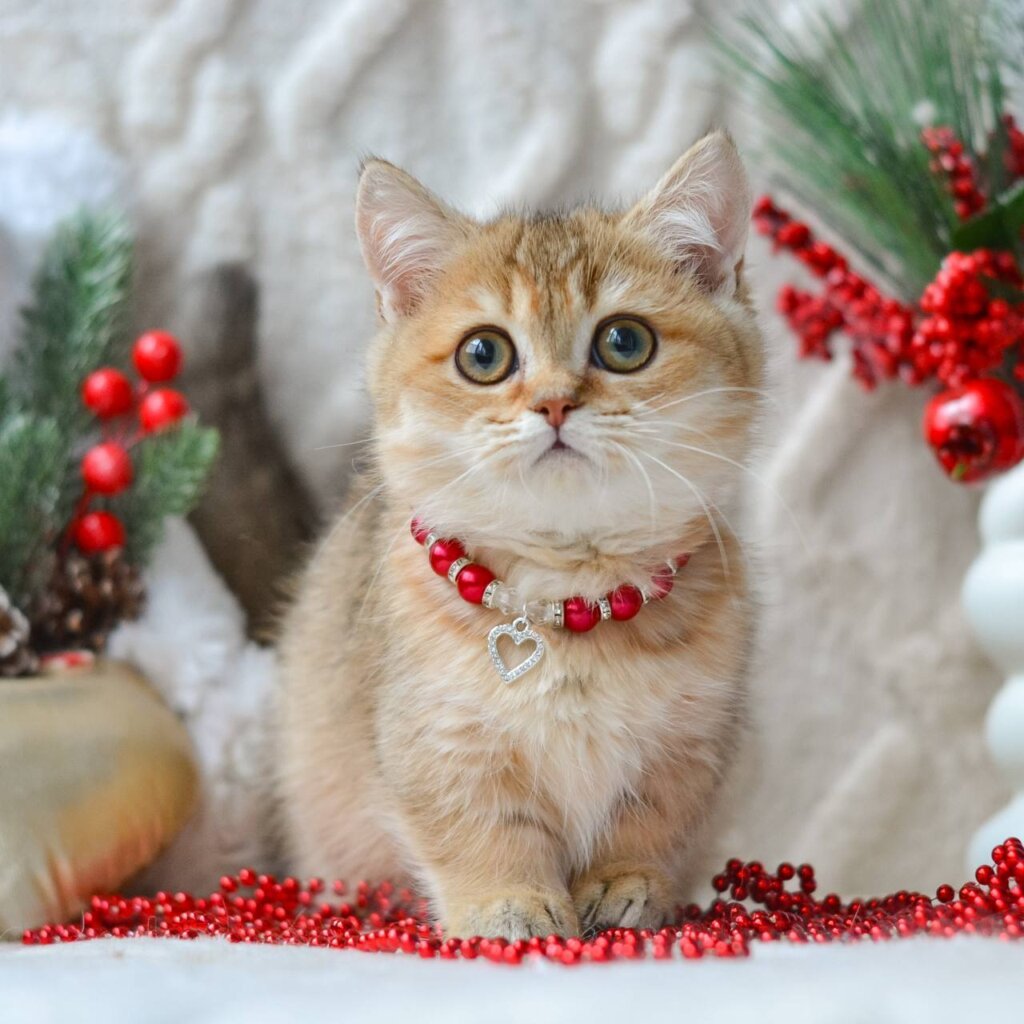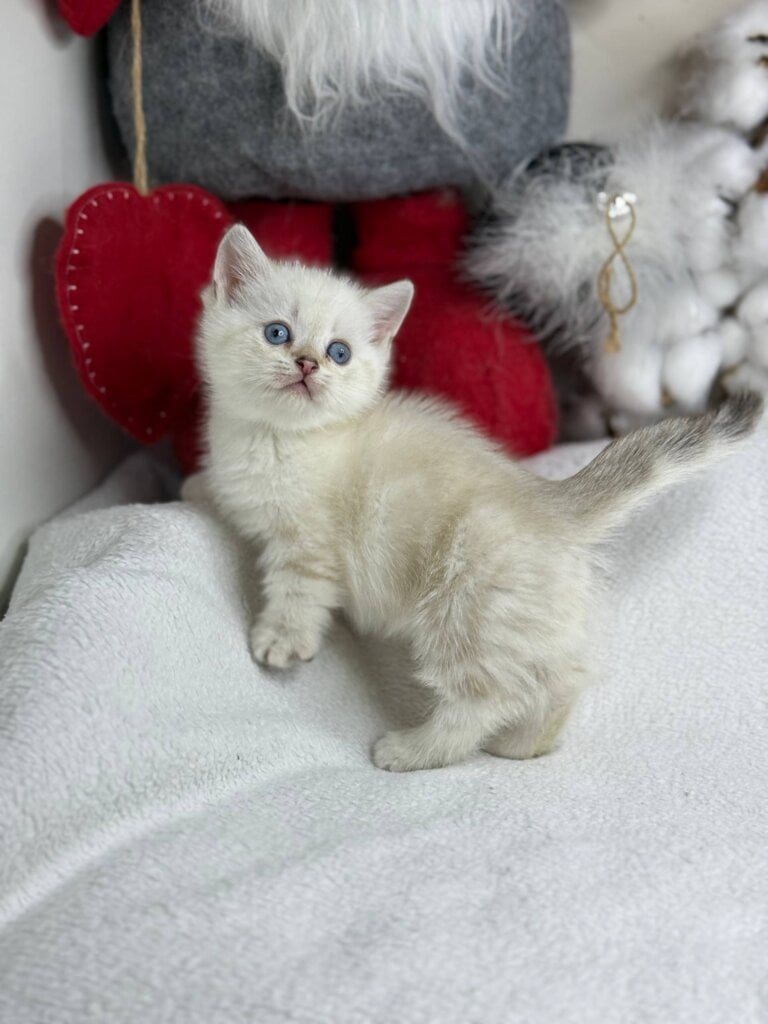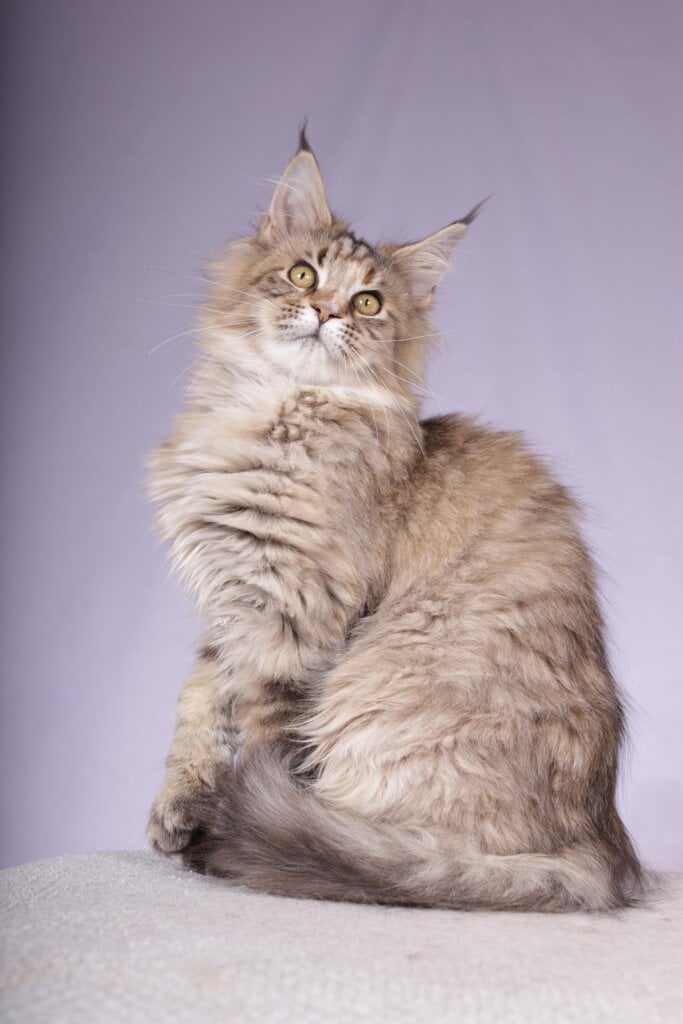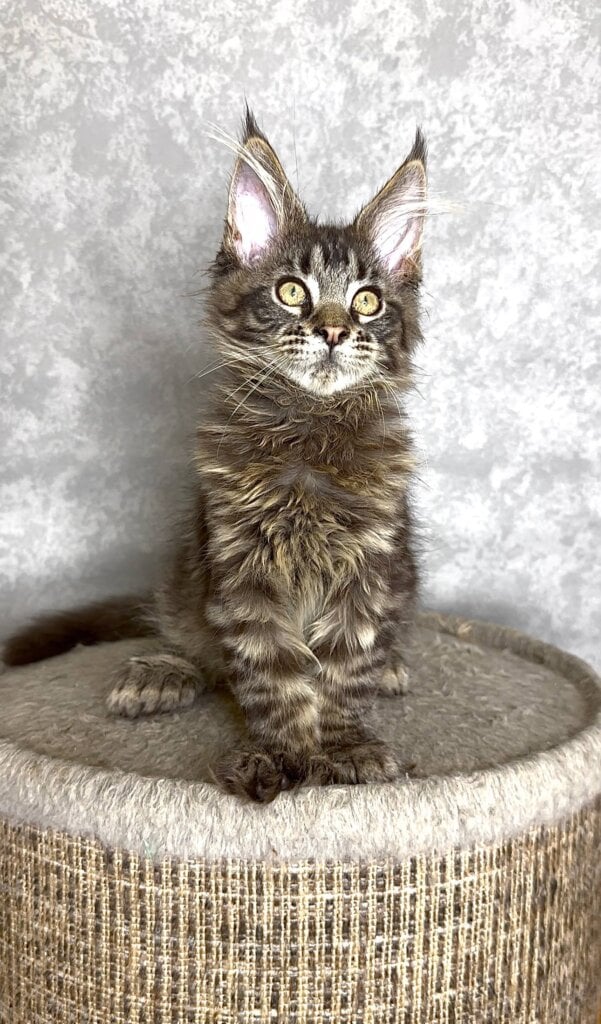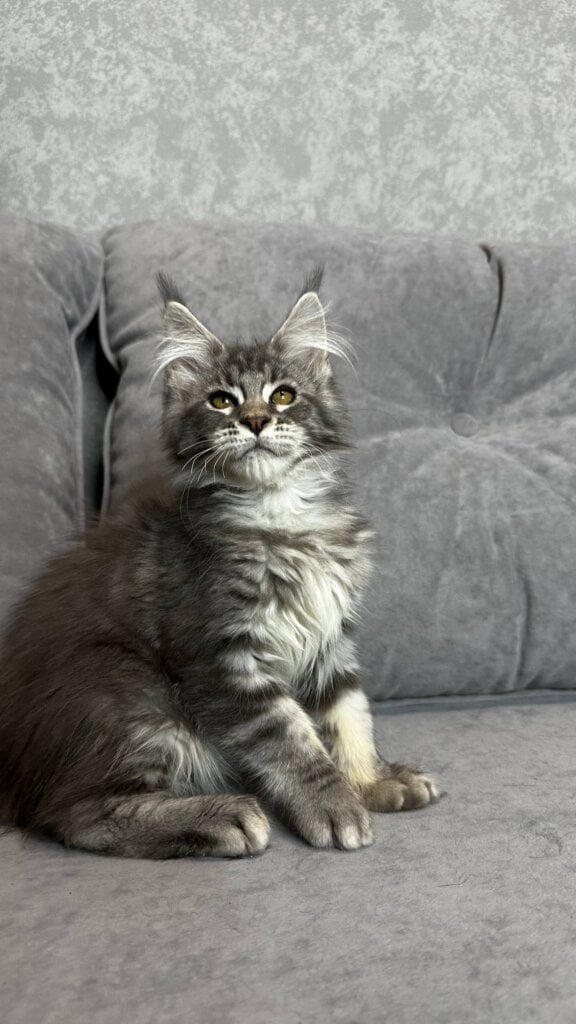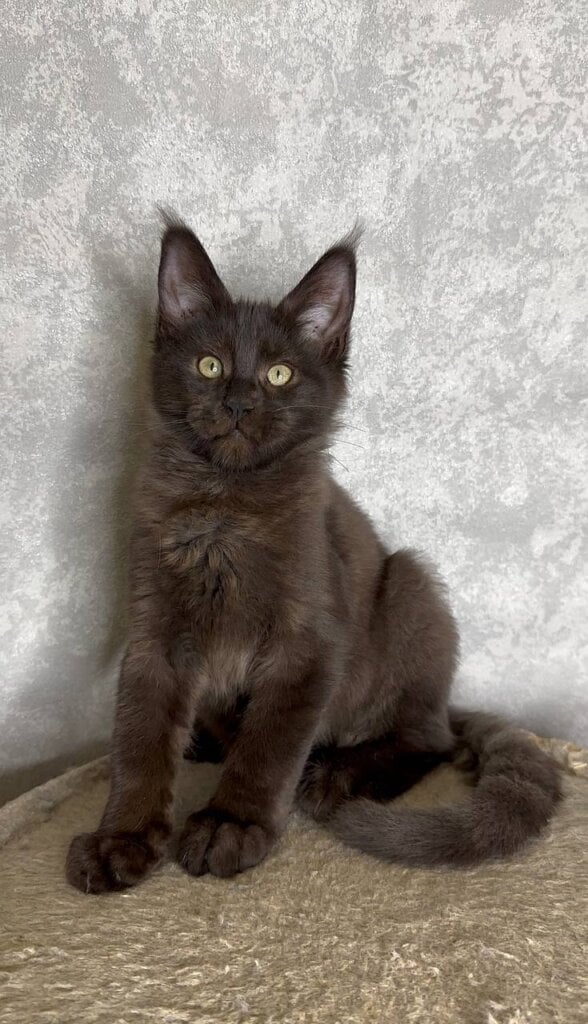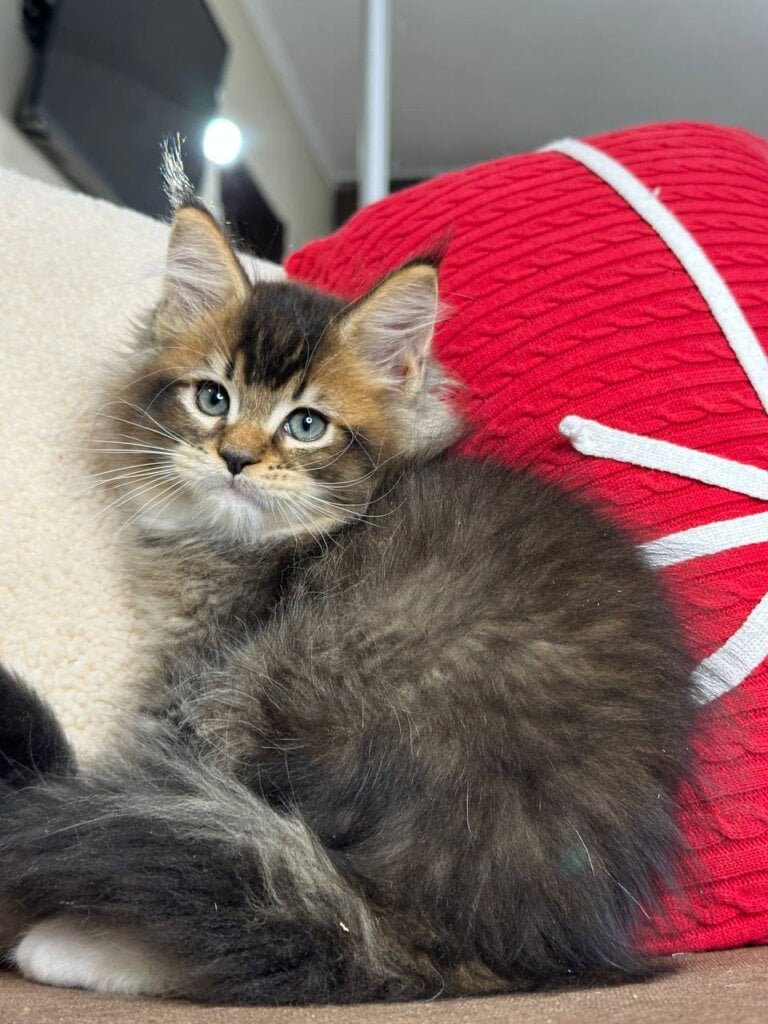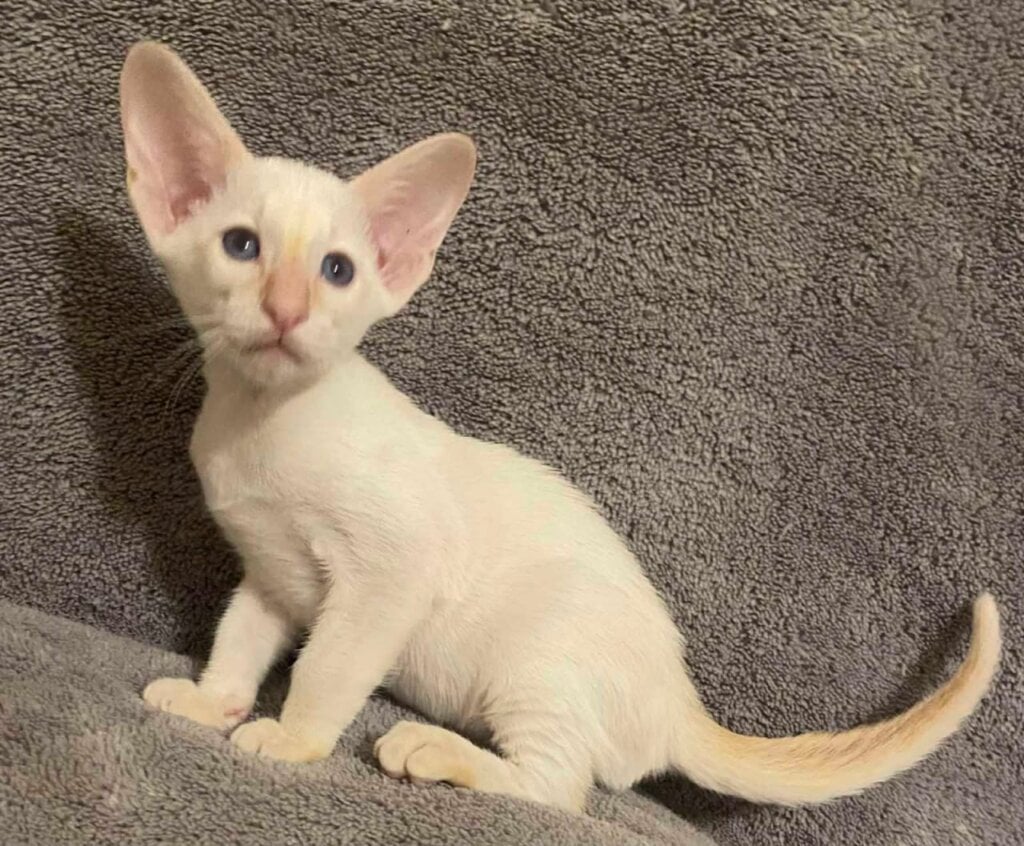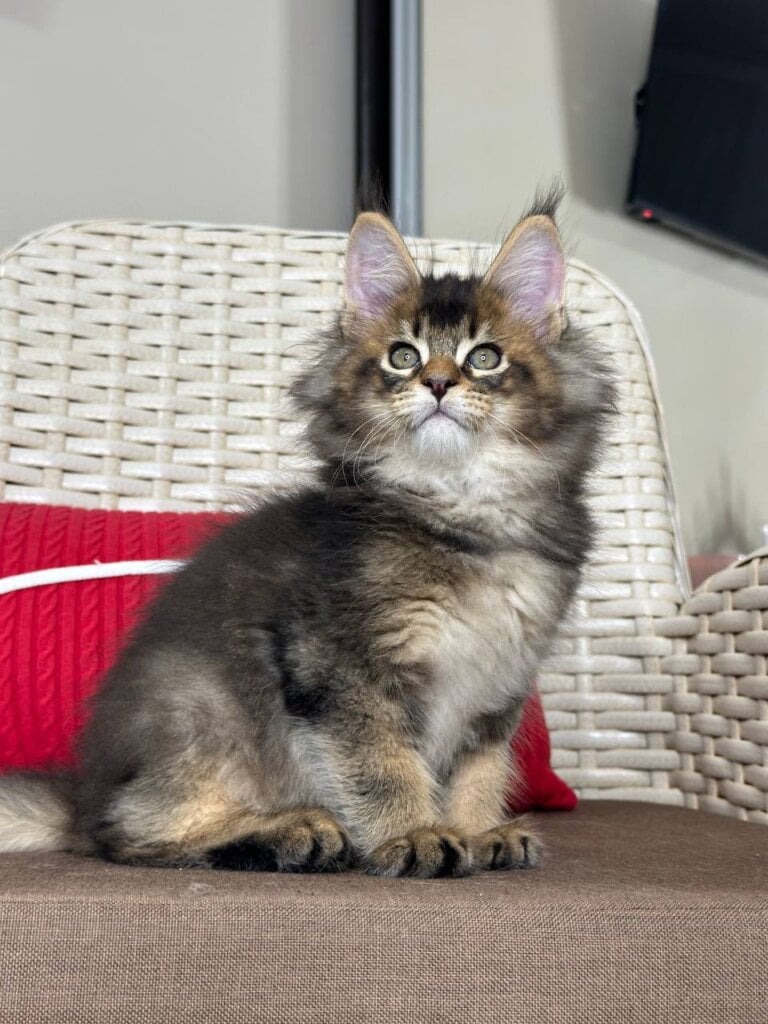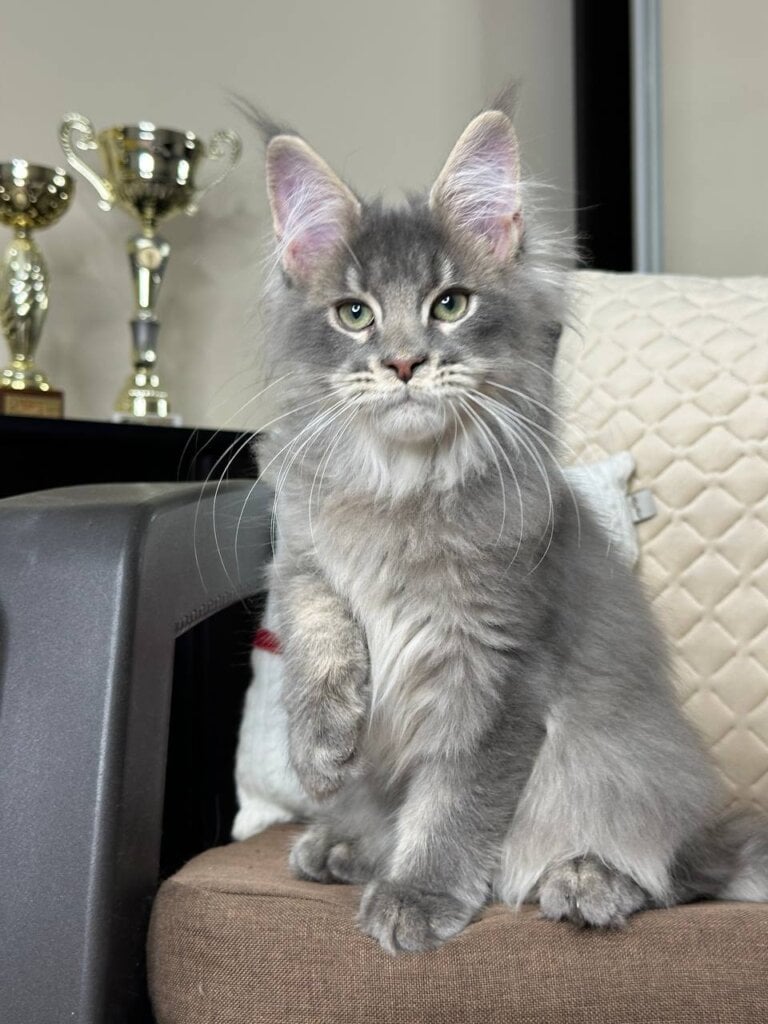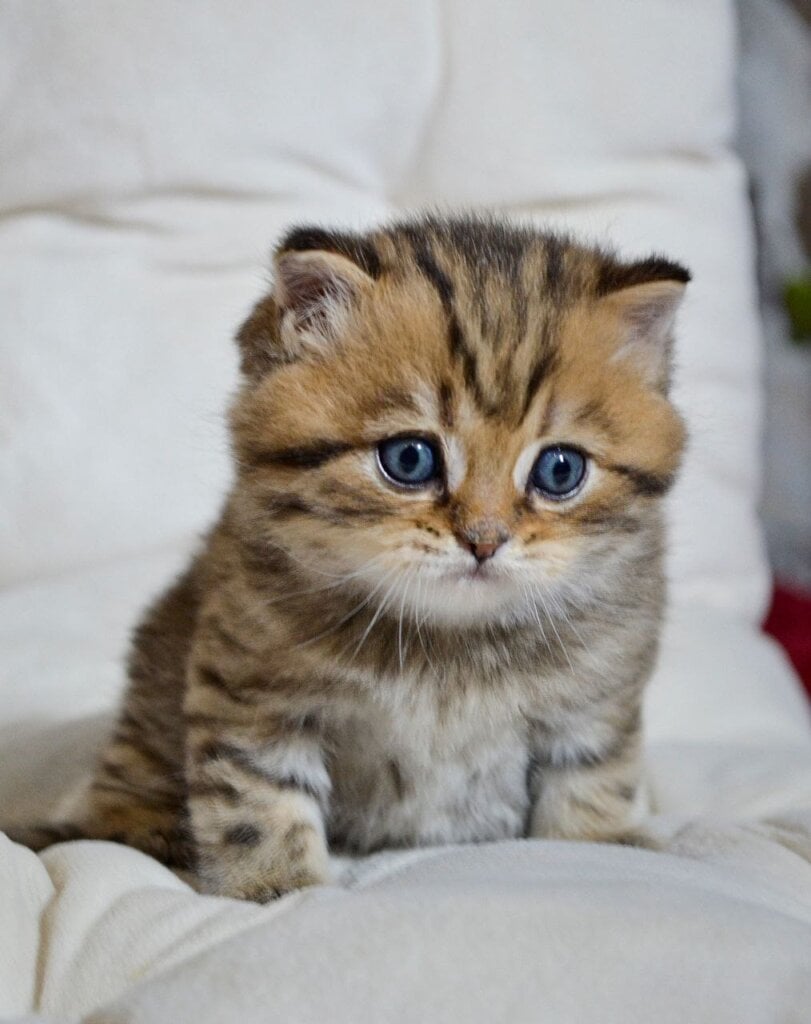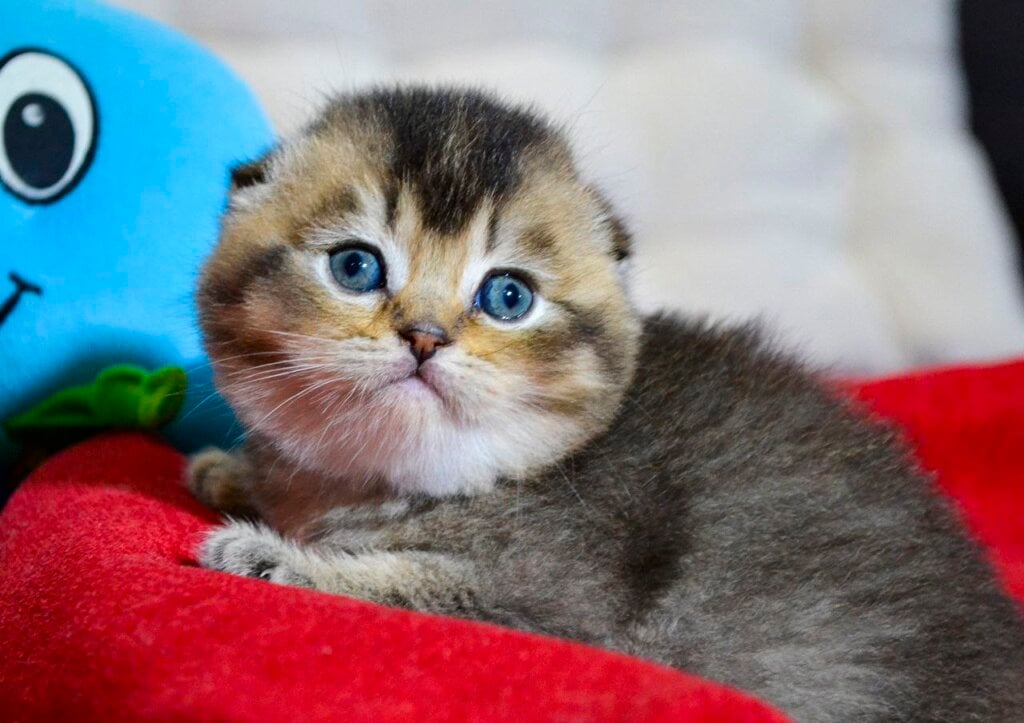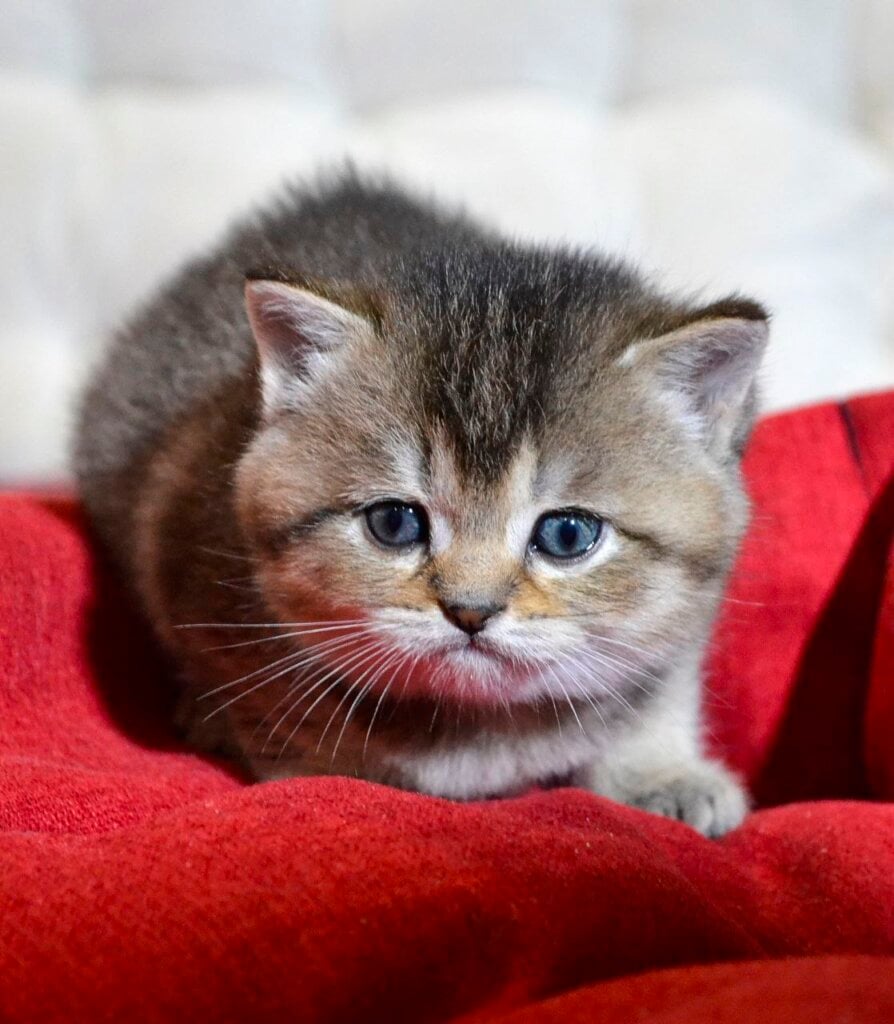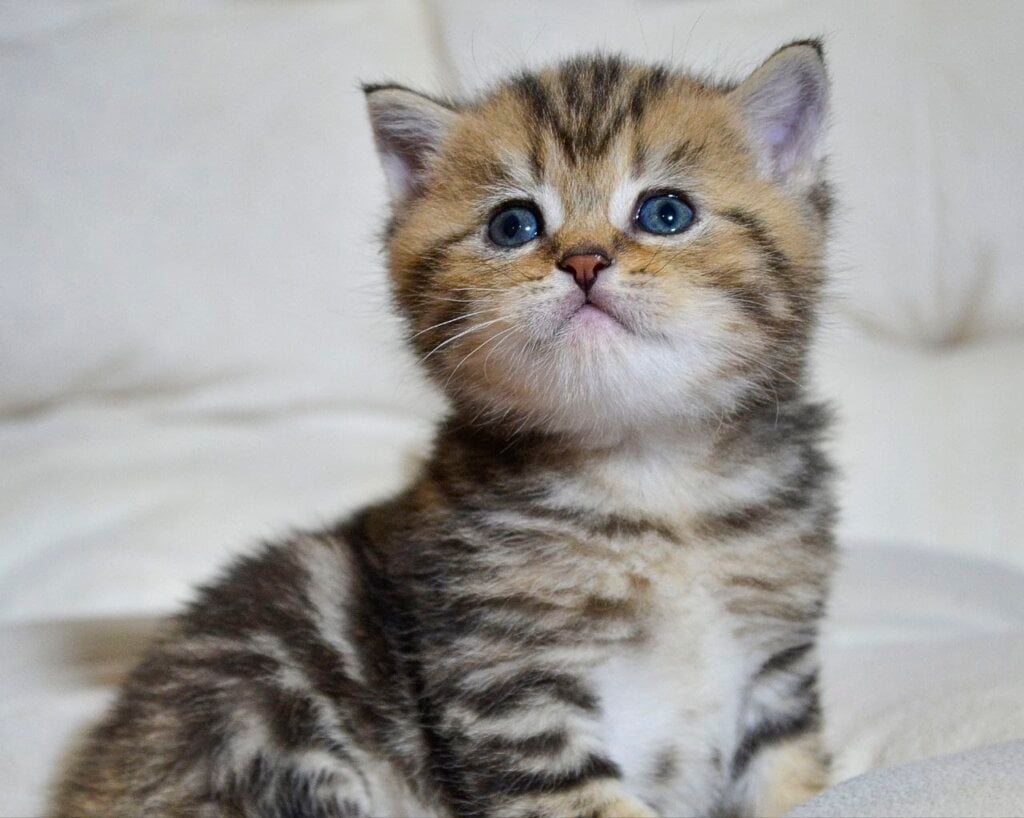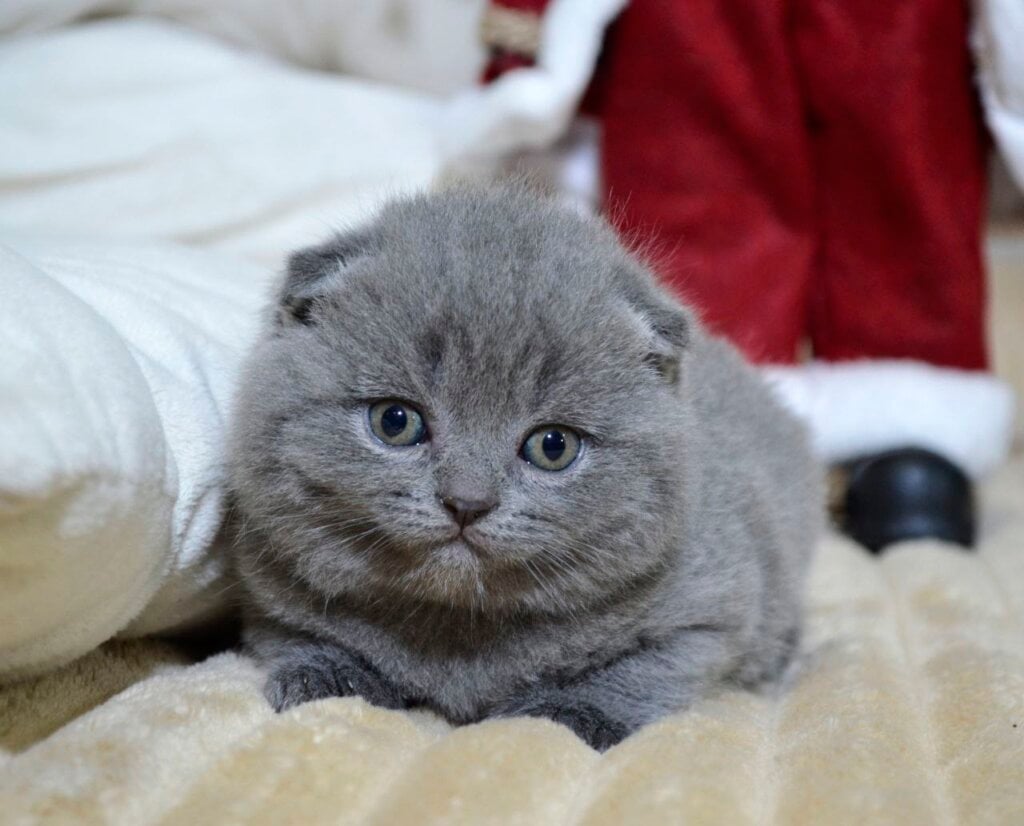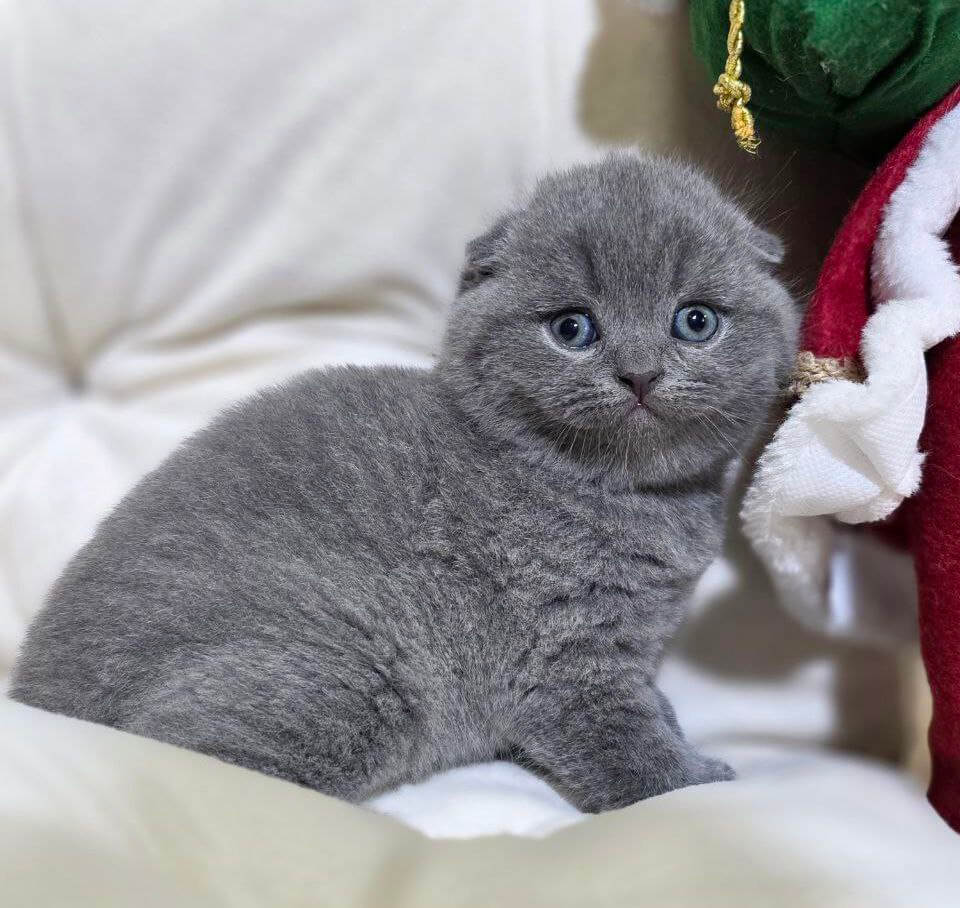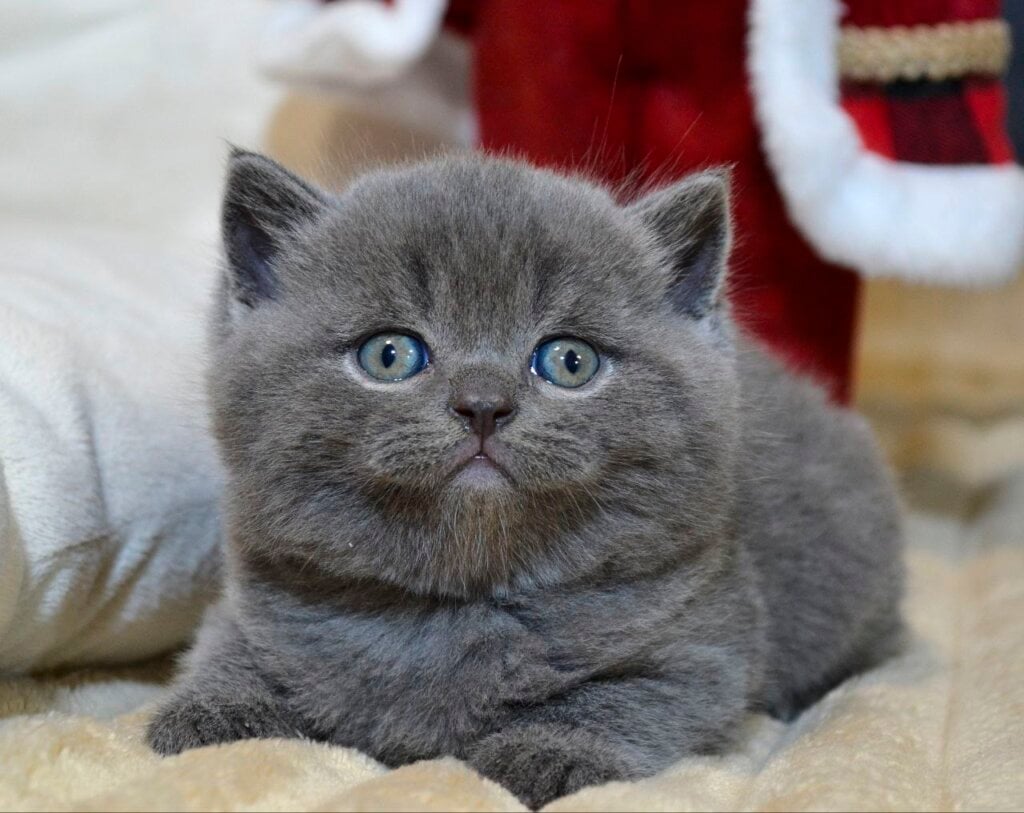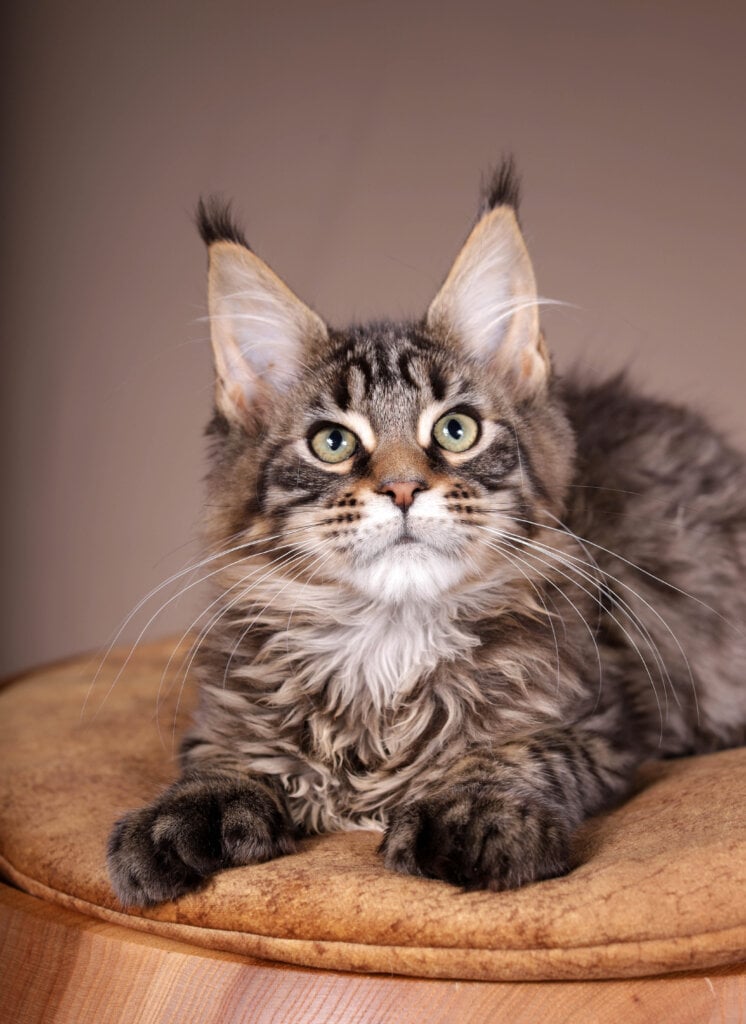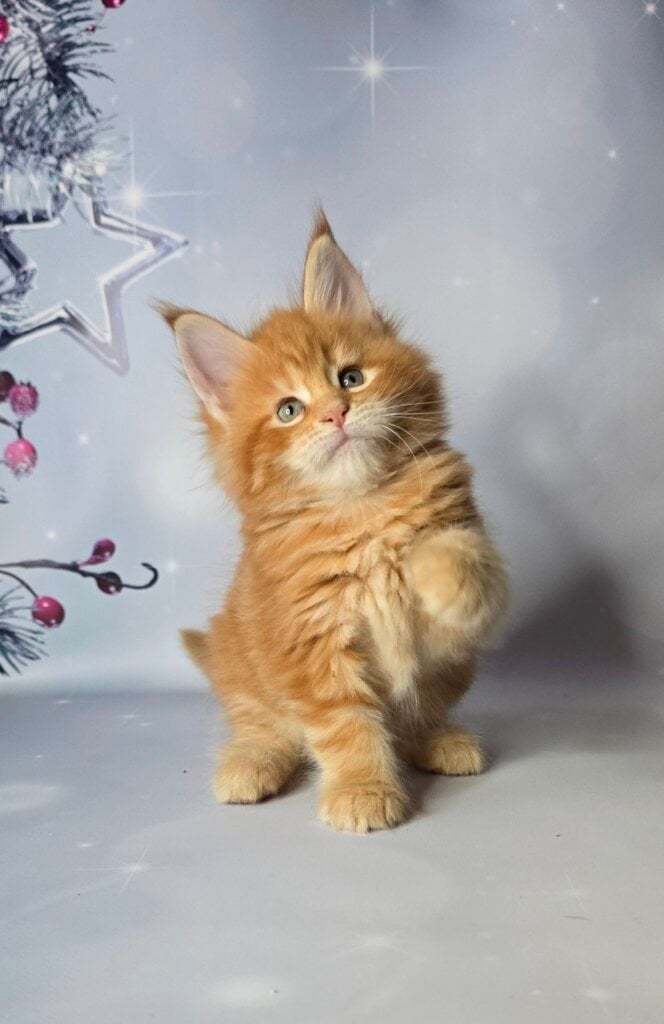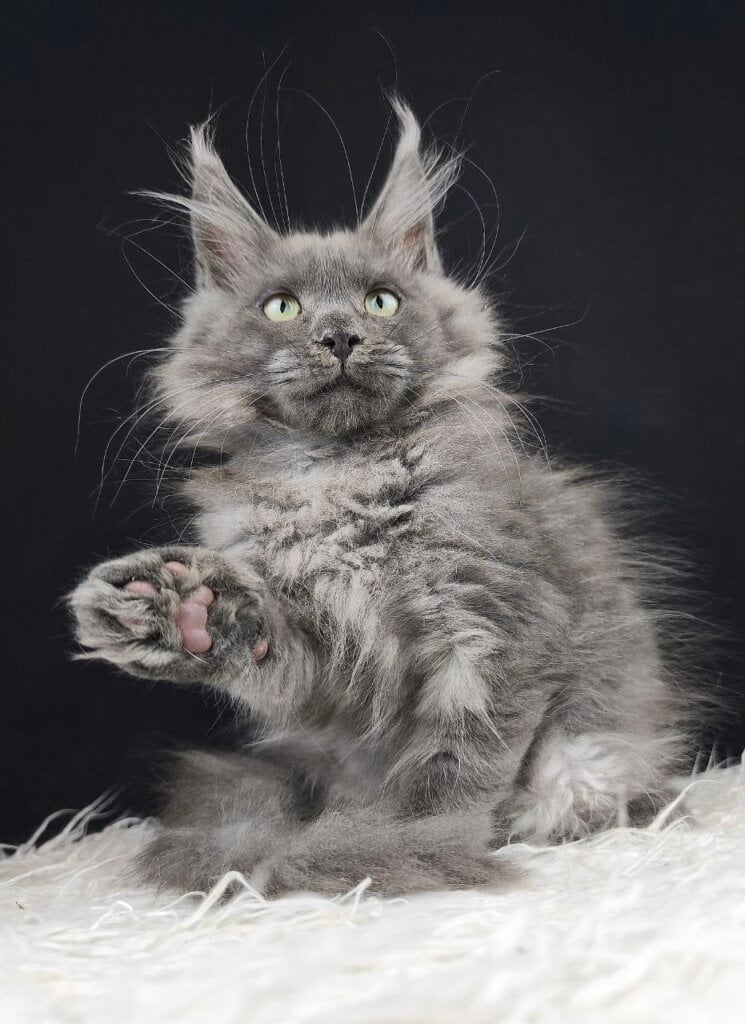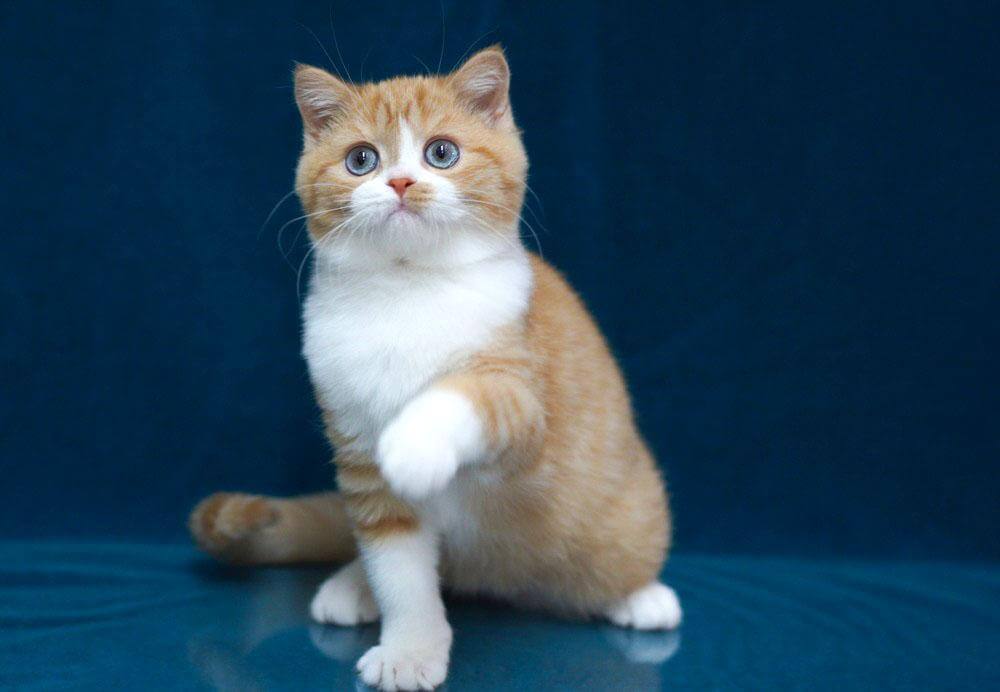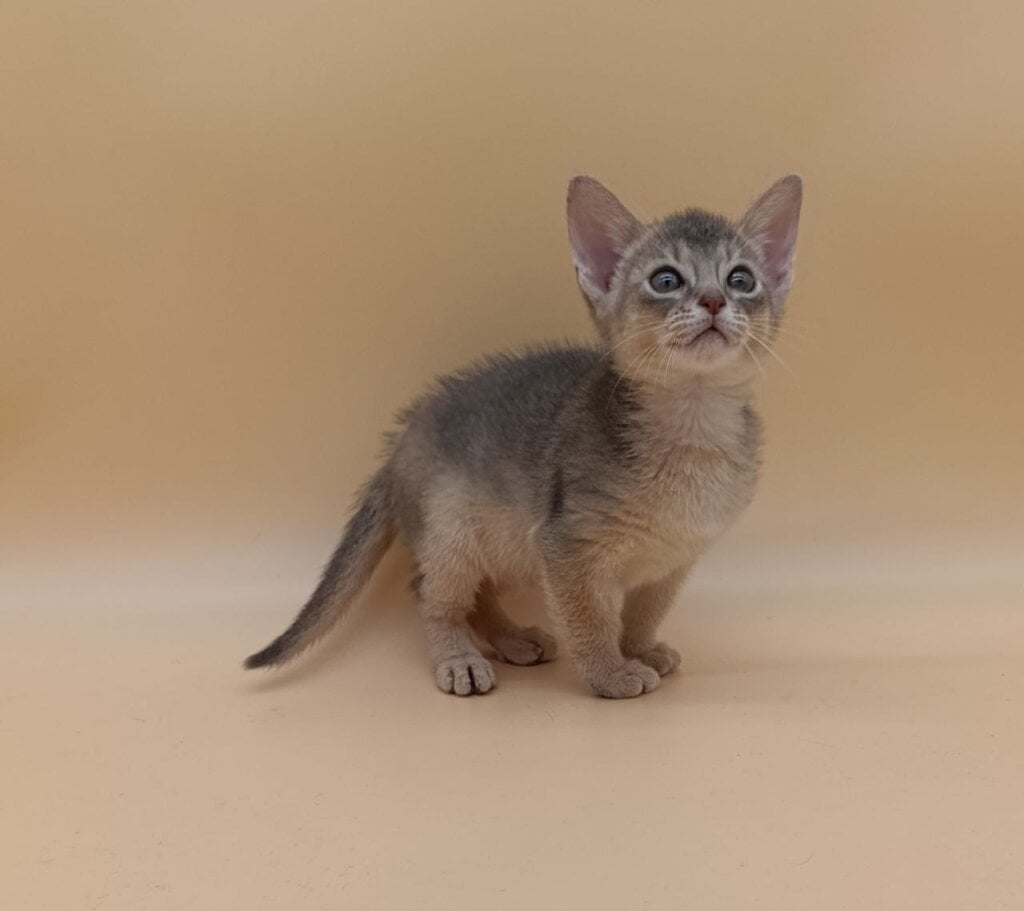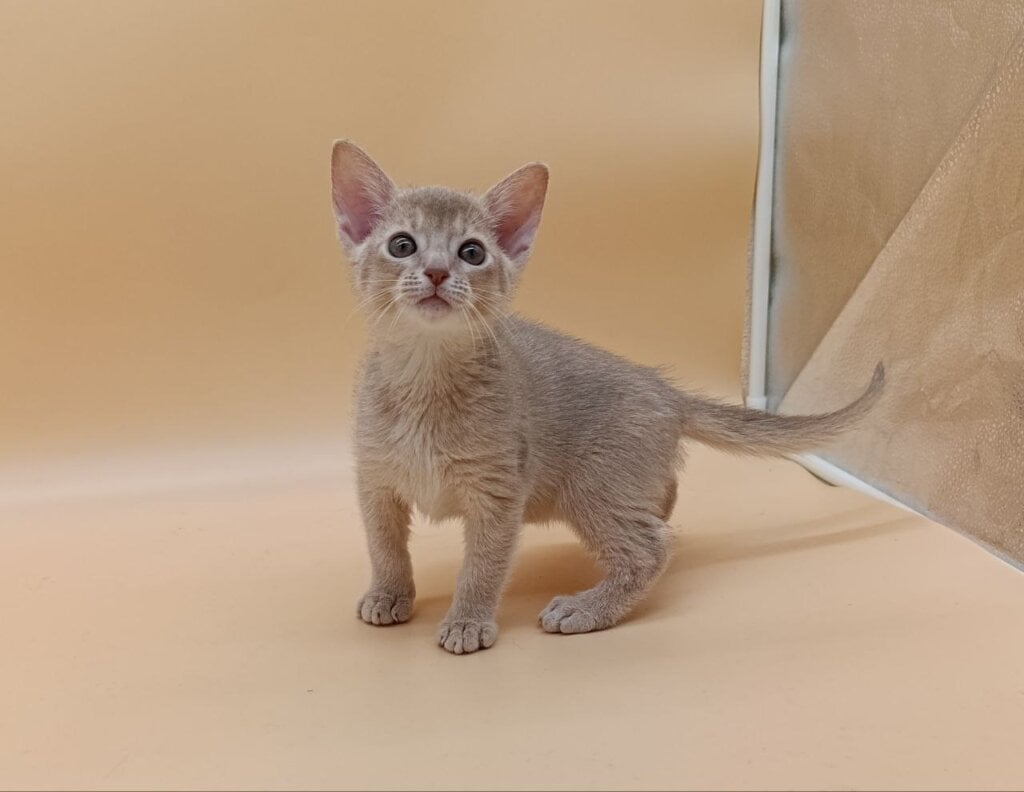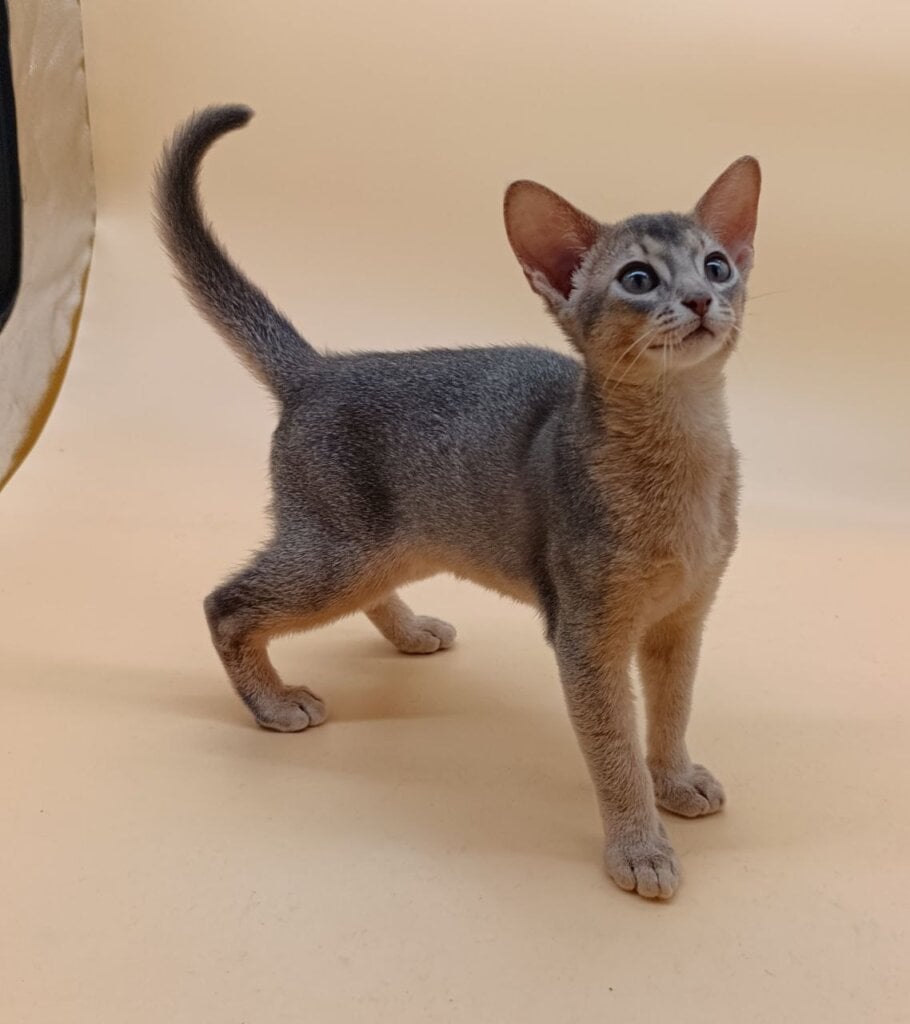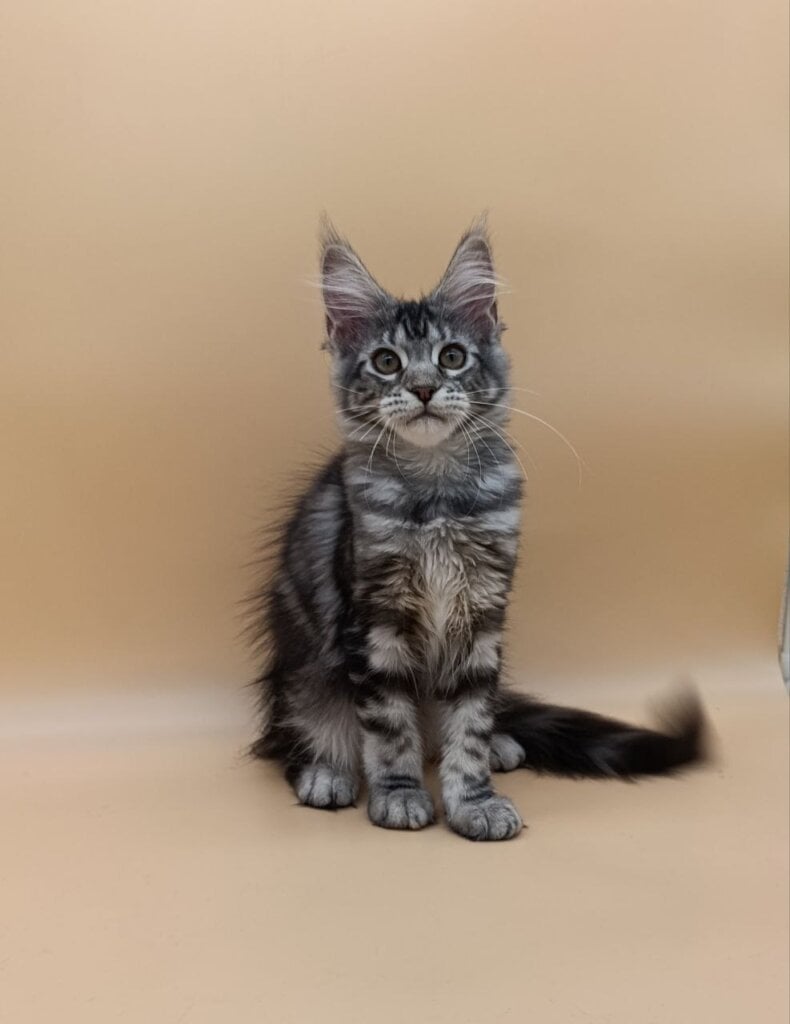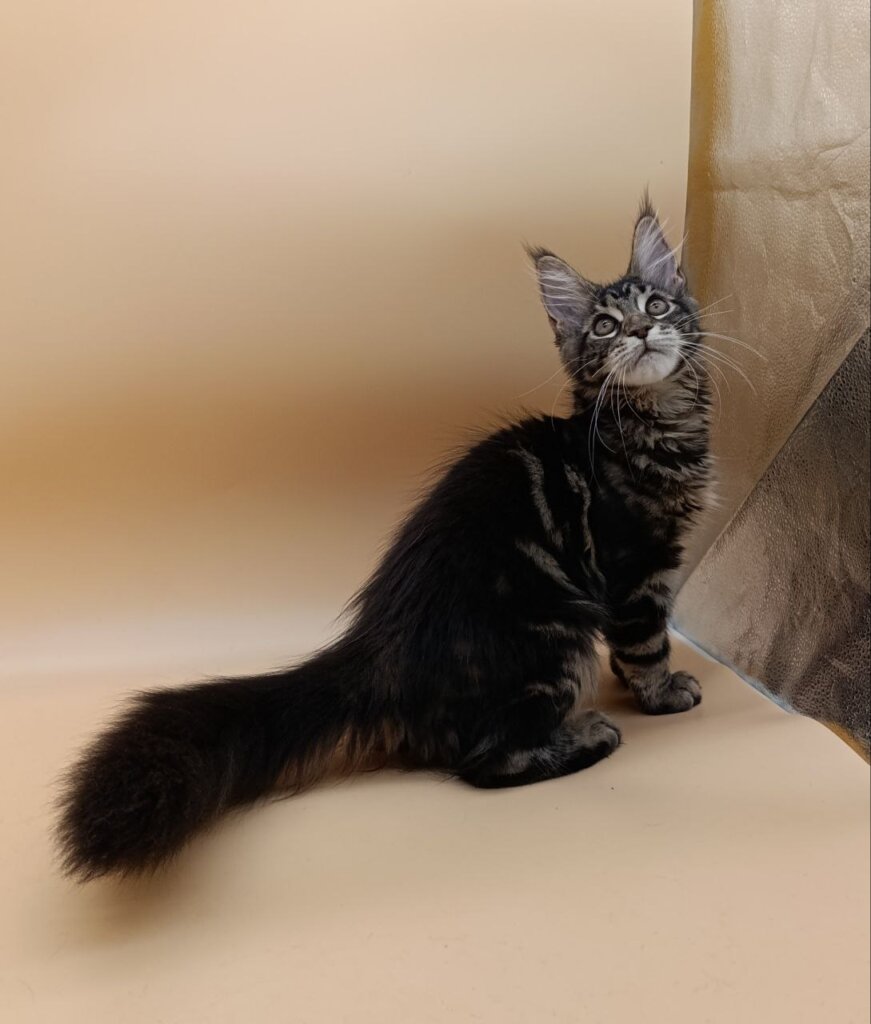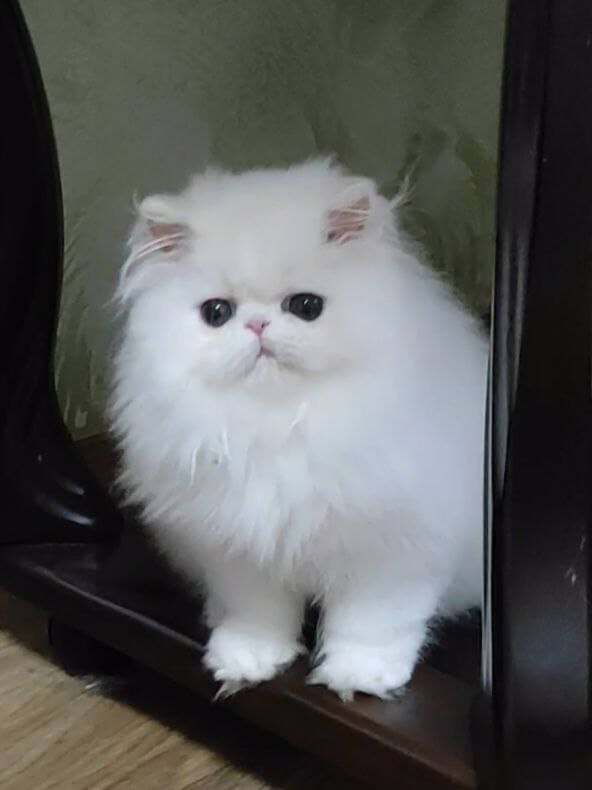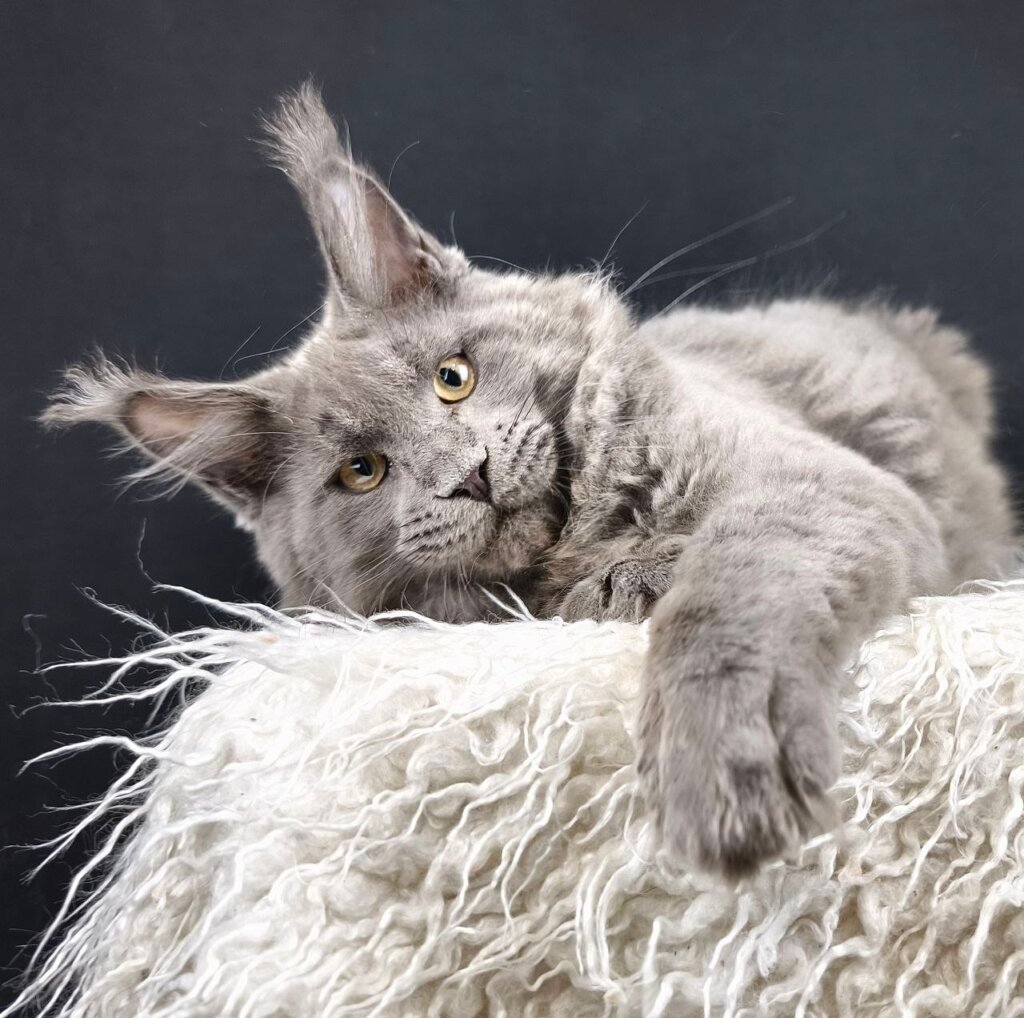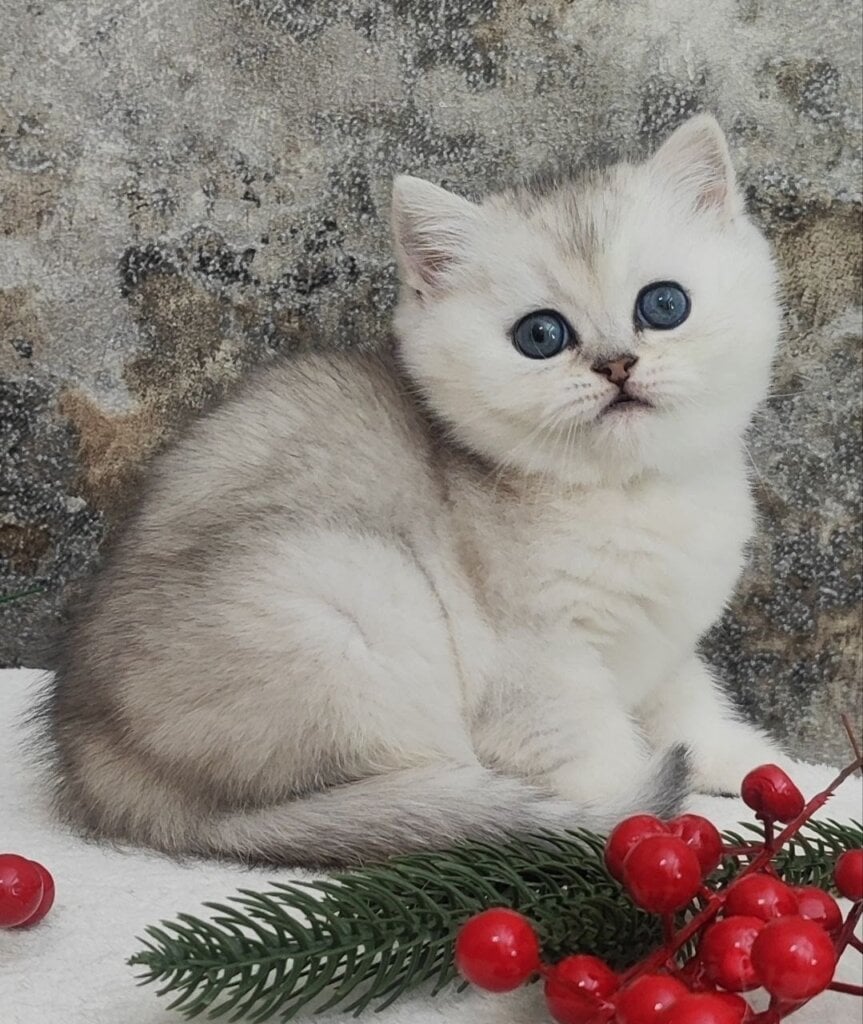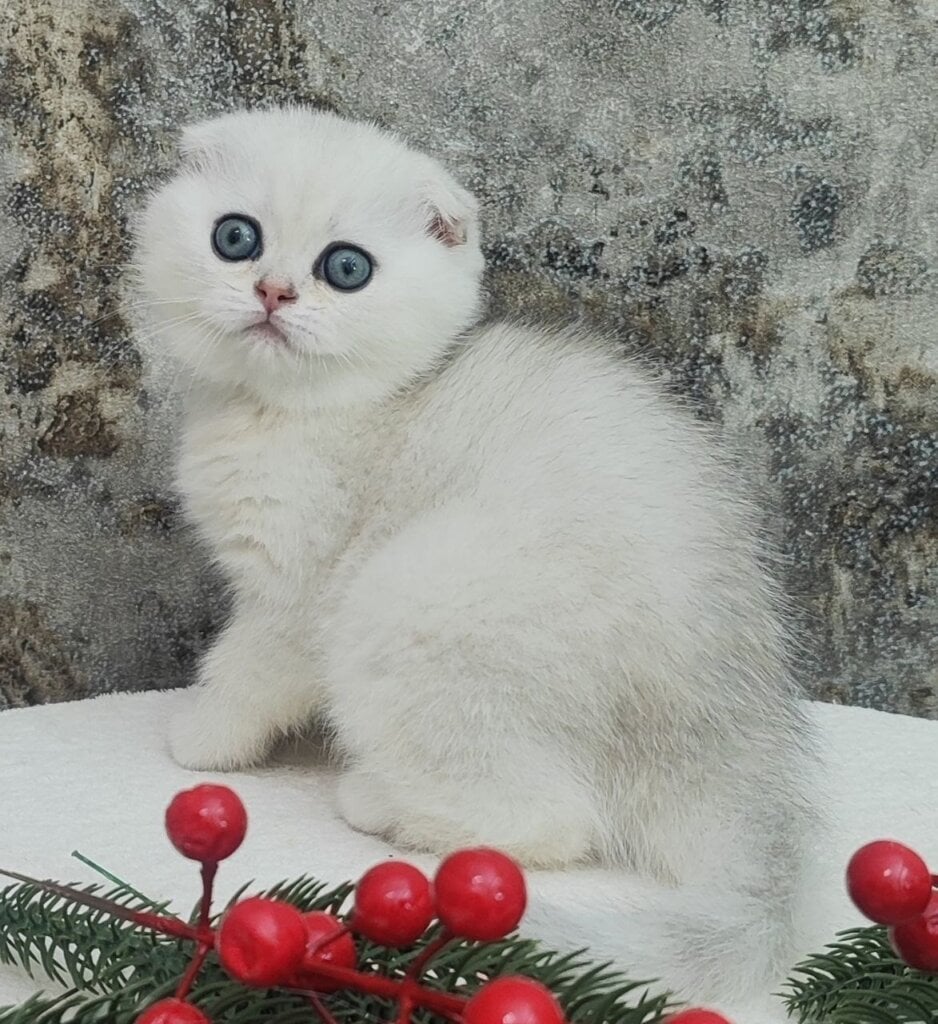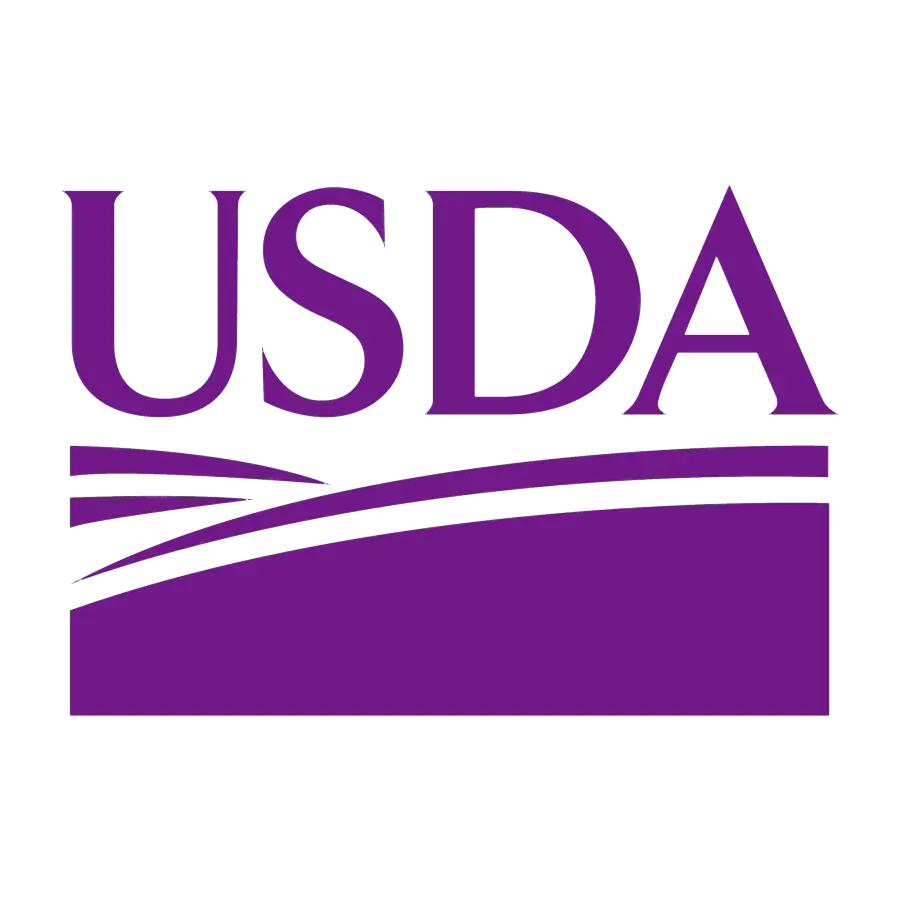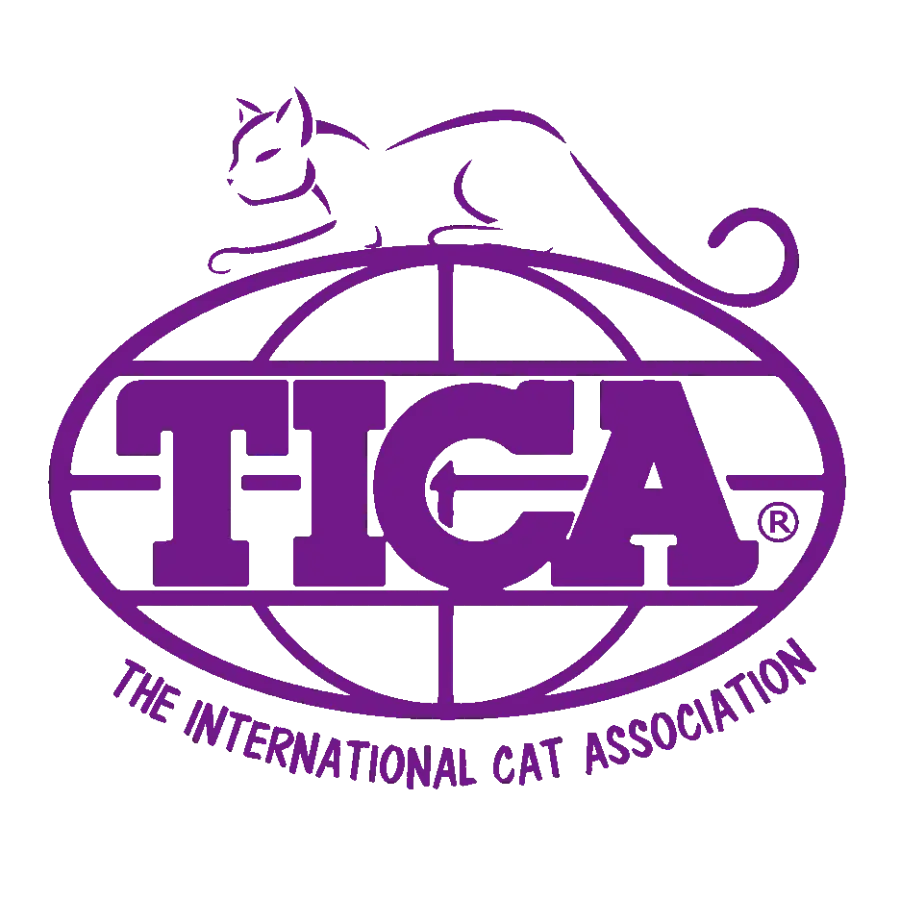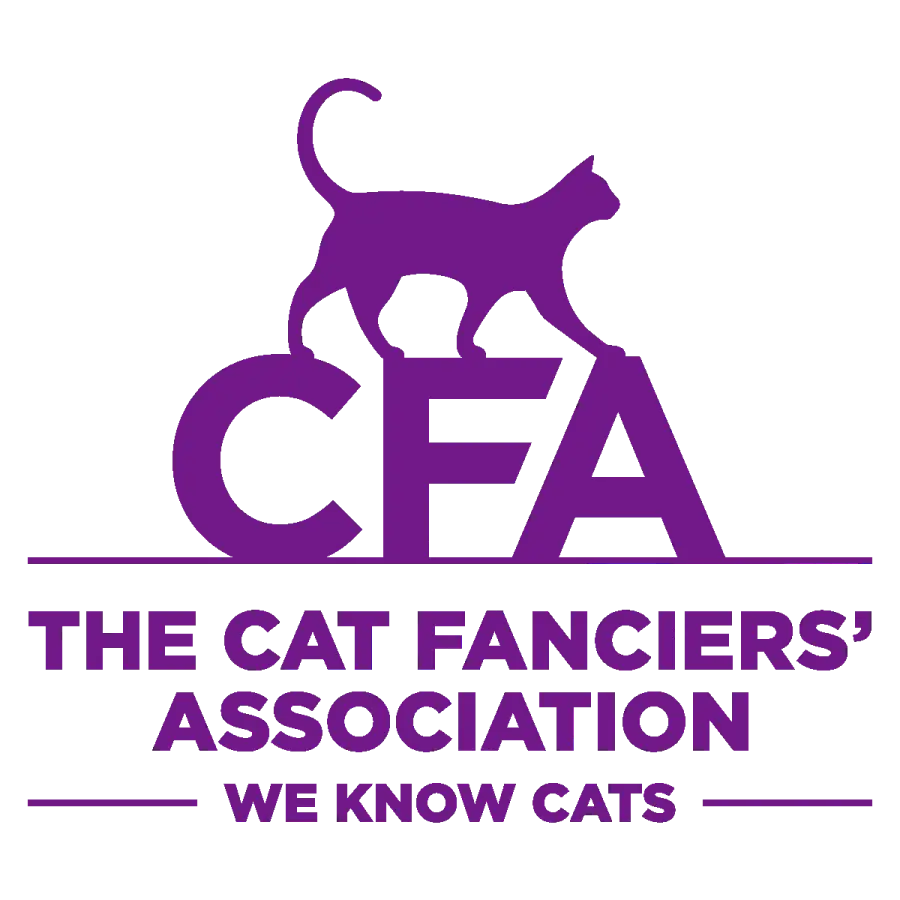Understanding Maine Coon Cats
Origins and Unique Traits
Maine Coons are remarkable as one of the oldest domestic cat breeds developed in North America. They probably originated from the cats that European seafarers introduced. As you may have guessed, these cats adapted super well to Maine’s rough climates.
Their seafaring heritage is most apparent in their striking physical characteristics. One of the most well-known traits of the Maine Coon is their size, as they can weigh anywhere from 10 to 25 pounds. Tufted ears and bushy tails combine to make these cats the ultimate cuties.
These characteristics help them survive in colder temperatures as well. These cats are super adaptable. They are highly adaptable to different living situations, which make them a great option for city slickers and country folk alike.
Popularity and Market Demand
Their charm has become impossible to resist, thanks to their docile nature and gentle disposition. As a result, folks frequently refer to them as “gentle giants.” Their loving temperament and kitten-like spirit ensure they excel as family pets.
Their memes on social media platforms have made them even more popular. Celebrities promote them too, flashing their Maine Coons in front of millions of social media followers.
Just like any other breed or pet, as their popularity increases, so does the demand, increasing their market price and availability. Their special attributes really stand out under the bright lights, increasing their worth.
As a result, they’ve turned these sensational kitties into one of the most desired breeds for cat enthusiasts.
How Expensive Are Maine Coons
1. Average Price of Maine Coon Kittens
Here’s a quick look:
| Type | Price Range |
|---|---|
| Pet-quality | $4,000 – $6,000 |
| Show-quality | Higher end of range |
Pet quality kittens are companions only and therefore less costly. Show-quality kittens, with better traits, fetch higher prices.
The breeder’s reputation has a huge impact, as well known breeders that breed from quality bloodlines will usually come at a higher price.
2. Factors Affecting Kitten Pricing
Several factors affect pricing:
- Established breeders with health guarantees and strong pedigrees may charge more.
- Pedigree: High-demand bloodlines increase costs.
- Prices vary by region due to local demand.
Rare Colors/Patterns: Unique coats often lead to higher prices.
Show-quality Maine Coons, due to their ability to compete, usually command a higher price than pet-quality Maine Coons.
3. Adoption versus Breeder Costs
Choosing between adoption or buying from a breeder involves weighing pros and cons:
- Lower fees ($100-$400), saves a cat in need.
- Adoption Cons: Limited availability of kittens.
Breeder Pros: Health guarantees, choice of pedigree. Higher costs, ranging significantly based on breeder reputation.
Adopting senior Maine Coons can be an incredibly fulfilling and budget-friendly option, providing you with a loving companion without the breeder expenses.
Long-Term Financial Responsibilities
Welcoming a Maine Coon into your life carries long-term financial responsibilities. These regal felines need a long-term financial plan that includes everything from healthcare to nutrition and grooming.
When you look at your expense plan monthly, you keep your financial goals front and center. This will help make sure your furry companion lives a long, happy, healthy life! Creating a monthly budget through an expense plan will make sure you are responsible financial Maine Coon parent.
Healthcare and Veterinary Costs
Another major category that has long-term financial responsibilities is veterinary care. Routine check-ups, at a minimum of two a year, run $40-$60 per exam.
Routine vaccinations and spaying or neutering are key, with the latter being a one-time but financially significant cost. Pet insurance is wise to cover unexpected costs, as emergency vet visits can range from hundreds to thousands of dollars.
Maine Coons are prone to hereditary health defects, so preventive care is essential.
Nutrition and Feeding Expenses
Access to good food is an important part of that equation. Maine Coons do best on high-protein diets.
Here are some recommended options:
- Wet food with real meat as the first ingredient
- Dry kibble with high protein content
- Grain-free options for sensitive stomachs
Monthly feeding costs hover between $20 and $60, accounting for an average of 22% of total costs. Access to quality food will help safeguard their health and well-being.
Grooming and Maintenance Needs
As with all longhaired breeds, Maine Coons require regular grooming. Keeping up with regular brushing will help prevent matting, and an occasional bath will help lay down their double coat.
Professional grooming services, though they can be expensive, provide an added service. Routine grooming at home is essential for skin health and comfort.
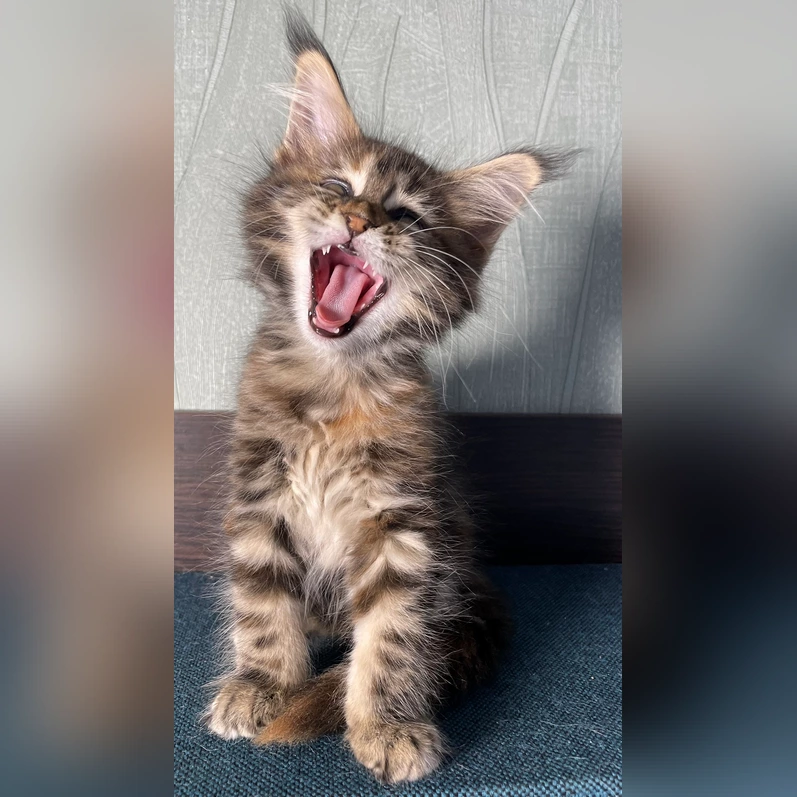
Hidden Costs in Maine Coon Ownership
Having a Maine Coon cat is a rewarding experience, but it’s wise to be aware of these hidden costs. These costs always surprise unsuspecting owners.
Food and Other Basic Supplies
You can’t have a cat without feeding it. Don’t overlook extra expenses like unexpected vet visits, grooming services, and larger litter boxes. Those costs can seriously add up!
Maine Coons are famous for their enormous size. They require more food and space which increases total costs.
Insurance and Emergency Care
Pet insurance is invaluable for Maine Coons, covering both routine visits and surprise health emergencies. This typically includes coverage for both accidents and illnesses, and many policies cover preventive care such as vaccination.
Equally as important is putting away money for emergencies. Vet bills can add up fast, and if your Maine Coon needs surgery, the costs can easily run into the thousands.
Further, having insurance allows you to focus on your cat’s health rather than his cost during those unexpected, tragic emergencies.
Accessories and Toys Expenses
- Scratching posts
- Interactive toys
- Grooming tools
- Large litter boxes
- High-quality beds
These basics run $10 to $100 apiece depending on how elaborate you want to get. Offering plenty of enriching toys keeps Maine Coons occupied, preventing them from getting bored and developing destructive habits.
By investing in high-quality and durable pieces, you guarantee that they will last longer, so you won’t have to replace them as often.
Travel and Boarding Costs
If you have to board your Maine Coon while you travel, you’re looking at $25 to $45 per day. If you’re on the road with your kitty, then locating pet-friendly lodgings is a must.
Planning for this costs involves considering the cost of extra meals, pet fees at hotels, and travel carriers. Whether your kitty is heading off on an adventure with you or you are simply planning ahead, you’ll find peace of mind with preparation.
Impact of Pedigree on Pricing
One of the largest factors in Maine Coon pricing is pedigree. Pedigree certification is how you know a purebred cat has an established lineage that can be traced through accepted breeding lines. This certification significantly increases the cat’s value.
It ensures purebred characteristics such as size, temperament and other special physical characteristics. A Maine Coon with a certified pedigree can cost thousands. The pedigree is the assurance of the breed’s purity and excellence.
Pedigree Certification Insights
| Certification Type | Price Implication |
|---|---|
| CFA (Cat Fanciers’ Association) | Higher price due to strict standards |
| TICA (The International Cat Association) | Moderate price with less stringent rules |
| None | Lower price, lacks verified lineage |
Unlike in dogs, where they are often maligned, cat registries, such as CFA and TICA, are important partners in the protection of breed standards. These organizations ensure breeders follow guidelines that preserve the breed’s characteristics.
When purchasing a Maine Coon, reviewing pedigree papers is very important. It confirms the cat’s pedigree. In doing so, you can be confident that you’re acquiring a true Maine Coon rather than a hybrid that might not possess the same qualities.
Breeding Rights and Their Costs
If you plan to breed Maine Coons, there are more expenses involved with getting breeding rights. These rights, as with most property, give owners the ability to breed their cats.
With that privilege goes responsibility, from health screenings to responsible ownership and care. These duties are a matter of life and death for your future litters’ temperament and health.
The potential for breeding rights can significantly increase the cost of a Maine Coon. They provide an opportunity to accrue future earnings through the sale of kittens.
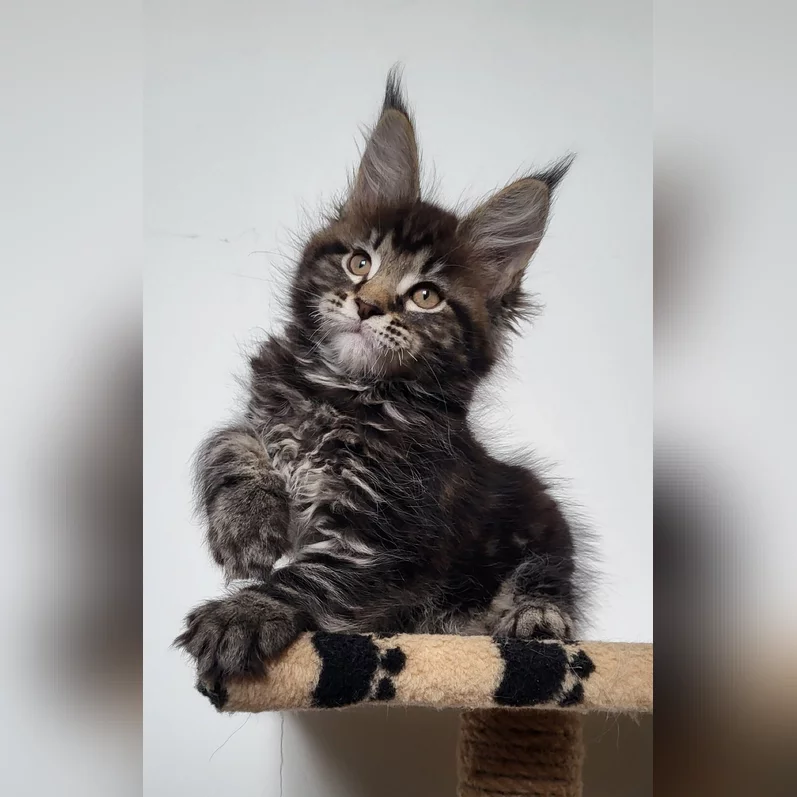
Budgeting for a Maine Coon
If you’re planning to bring a Maine Coon into your home, it’s important to budget wisely. Here are some important considerations:
- Initial Adoption Fees: These vary between $400 to $1,500 through breeders or adoption centers.
- Premium cat foods will add another $30-$70 per month.
- If you include routine check-ups and vaccines expect $20-50 more a month.
- Cost of regular grooming Regular grooming supplies or professional services are anywhere from $10 to $30 a month.
- Pet Insurance: Optional but beneficial, ranging from $10 to $40 monthly.
- Budget for unexpected health issues or accidents.
Monthly Expense Planning
Being a responsible Maine Coon owner means budgeting for regular monthly costs. Food, grooming, and healthcare comprise the core of this budget.
Maine Coons love to eat high-protein food, which makes for a higher monthly food bill. Daily brushing goes a long way to avoid mats, so budget for a groomer or invest in good grooming equipment.
Regular veterinary care will ensure your Maine Coon is healthy and help avoid expensive problems in the future. Keeping tabs on these costs will prevent you from being shocked by the cost and help you remain in your budget.
Preparing for Unexpected Costs
Surprises costs come with the territory of being a pet parent. These can be things like emergency vet visits, unexpected surgeries, or even long-term medications.
Building an emergency fund can help you weather these surprises with grace. Set aside a little each month, and you’ll start to create a buffer for whatever life throws your way.
Being proactive and saving for emergencies ensures you are ready for anything, ensuring your Maine Coon receives the best care without financial strain.
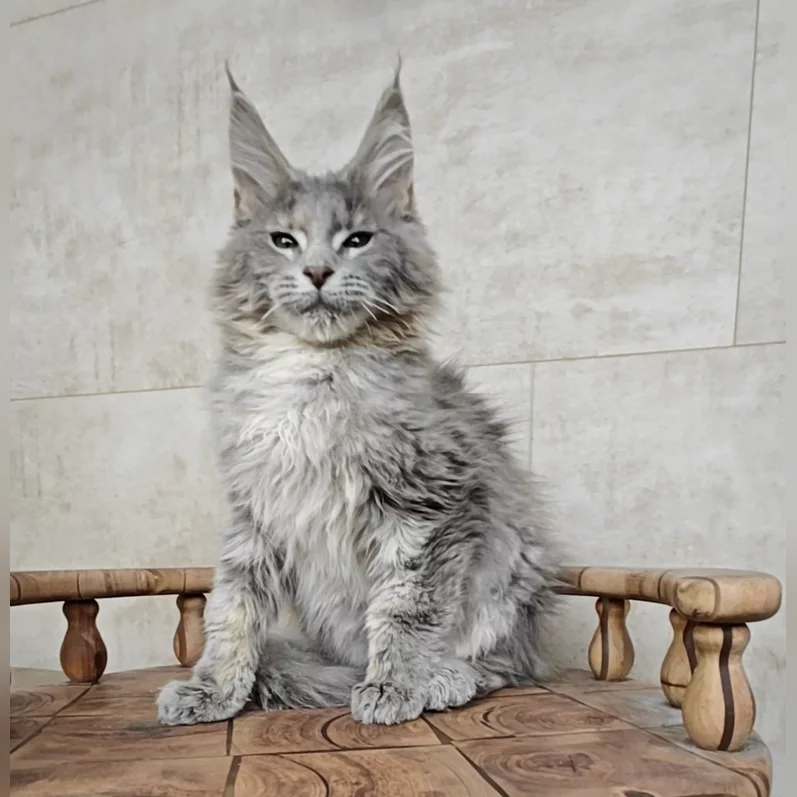
Why Maine Coons Are Costly
Maine Coons are a striking breed with their big and fluffy appearance and known for their gentle and playful demeanor. The breed’s rarity plays a huge role in their price. Compared to other, more common cat breeds, Maine Coons aren’t as readily available in shelters and rescues.
This limited availability means that they are quite expensive already, especially since prospective buyers usually have to reach out to breeders. These breeders help maintain breed standards by following responsible breeding practices, which increases the cost.
They are dedicated to the Maine Coon breed, performing rigorous health screenings and genetic testing, providing genetically sound kittens free from hereditary diseases. This cautious method ensures healthy, well-socialized cats, which make the higher prices worthwhile.
Influence of Color and Pattern
The color and pattern of a Maine Coon play a big role in determining its price. Specific coat colors, such as silver or blue, are also rare and highly desired. This rarity increases their market value.
A Maine Coon with a rare tortoiseshell or calico pattern will sell for more. A more standard tabby would be much cheaper. Good breeders can justify high prices for these kittens.
As you might guess, most cat lovers prefer cats with unique patterns and colors.
Popularity and Demand Trends
Maine Coons are more popular than ever. This increase in popularity is, in big part, due to social media, showcasing their gorgeous appearance and playful demeanor. This trend has contributed to an unprecedented increase in demand, pushing prices even higher.
As interest in these affectionate behemoths has increased, they have become harder to come by and thus more expensive. The increased interest has encouraged breeders to meet demand, but the balance between supply and demand remains a constant challenge.
